

Bell Ringers
Independent research projects in upper elementary, independent research projects in upper elementary ela.
Every year, I plan to give my students more choice, voice, and independent project work. Of course, we also have to deal with state testing and loads of other requirements. However, giving your students independent research projects not only helps them demonstrate learning and mastery of standards, it also gives them some choices and ability to share their own unique voice! Here are some independent research projects in upper elementary ELA that your 4th through 6th graders will love!
Genius Hour
You may have heard of Genius Hour or Passion Projects. Genius Hour is considered project-based learning, and it starts with a question. Students choose their own research question about anything really, and they study it at least an hour a week. After reading/researching about their question, their final project can be something as simple as an explanatory slideshow or building their own dollhouse. The possibilities are endless.
Genius Hour can require some scaffolding at the beginning. For example, you may ask your students to research a question related to a certain topic. If you’re reading Watsons Go to Birmingham, for example, they may ask a question surrounding the Civil Rights Movement or the 1960s. The topics can be open-ended to give the students some choice but still have an overarching theme.
Once students get practice researching and coming up with their own final project, they can choose a Genius Hour topic about anything. Some example questions may include:
- How do I promote healthy eating in elementary school?
- How do I prepare for middle school?
- What is the best place to take a family vacation, and how can I plan one for my family?
- How do you start a small business as a student?
Genius Hour gives students choice and voice in the classroom, and you’ll love learning about their passions!
Author Studies

This is one of my favorite projects to use for upper elementary ELA students! I first implemented this project with fifth graders after state testing. This is the perfect time of year for an independent study, and it reinforces reading, writing, and research concepts used throughout the school year!
This project includes almost everything you need for your students to complete a research project on the author of their choosing . It sets them up to brainstorm, research, take notes, plan, and then complete a research paper on their selected authors. I have also made sure to leave some of the note-taking more generic so that you and your students can use as little or as many pages as they need.
Start by giving students the included list of possible authors to research or let them choose their own. This author may already be a favorite or one they want to know more about! Once the author is chosen, your job is to facilitate. Remind them of resources to use for research, note-taking skills and options, and let them learn and explore!
The author study resource includes everything your students need to get started. You’ll have the author examples, note sheets, rubrics, and an example research paper to help guide your instruction and student learning!
Differentiate by having students work in groups to research an author together or study different authors within the same genre. This is also a great way to culminate literature circles by having students research the author they read!
These independent research projects in upper elementary ELA are some of my favorites to provide choice while differentiating for all learners. What research projects have you tried in your ELA classroom?
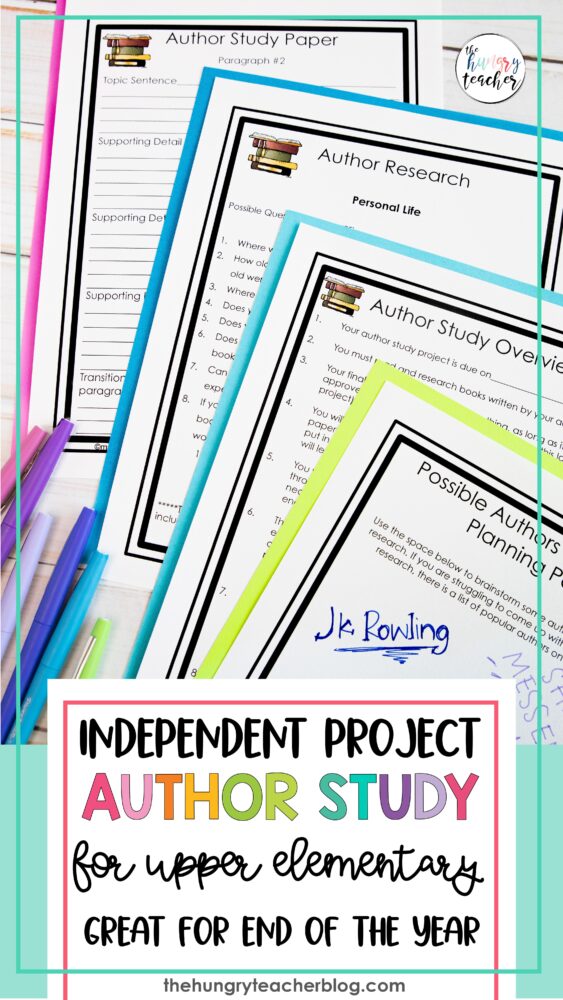
- Read more about: Upper Elementary Reading
You might also like...
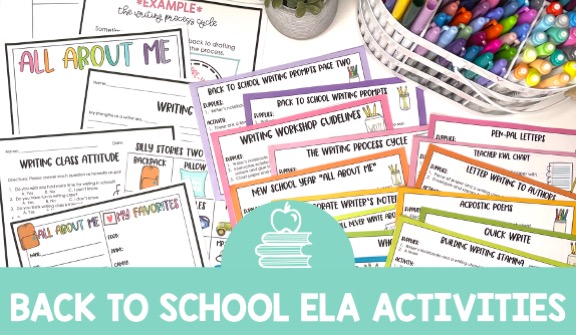
Reading and Writing Activities for Back to School in Middle School ELA
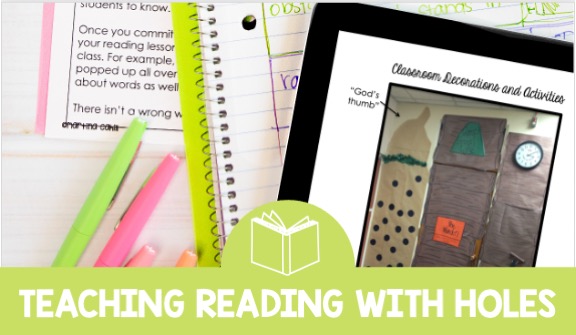
Teaching Reading Skills with Louis Sachar’s Holes

The Best Novels to Read with Sixth Grade
Get your free middle school ela pacing guides with completed scopes and sequences for the school year..

My ELA scope and sequence guides break down every single middle school ELA standard and concept for reading, writing, and language in 6th, 7th, and 8th grade. Use the guides and resources exactly as is or as inspiration for you own!
Meet Martina

I’m a Middle School ELA teacher committed to helping you improve your teaching & implement systems that help you get everything done during the school day!
Let's Connect
Member login.
PRIVACY POLICY
TERMS OF USE
WEBSITE DISCLAIMERS
MEMBERSHIP AGREEEMENT
© The Hungry Teacher • Website by KristenDoyle.co • Contact Martina
Join my VIP teacher email club!

If you are struggling with teaching the research report process, you are not alone. Seriously, we’ve all been there!
I spent several years avoiding research reports in my classroom or depending on the Library-Media Specialist to teach the research process.
One year, I decided to take the plunge and teach my students how to research a topic and write a research report.
The process was clunky at first, but I learned a lot about how students approach research and how to guide them from choosing a topic to completing their final copies.
Before we discuss the HOW , let’s talk about the WHY .

Why should you assign research reports to 5th and 6th grade students?
I have three main reasons for assigning research reports to my students.
First, the skill involved in finding reliable sources and citing sources is valuable.
Beginning in 5th grade, and possibly even before, students need to be able to discern the reliability of a source . They should be able to spot propaganda and distinguish between reputable sources and phony ones.
Teaching the procedure for citing sources is important because my 5th grade students need to grasp the reality of plagiarism and how to avoid it.
By providing information about the sources they used, students are consciously avoiding copying the work of authors and learning to give credit where credit is due.
Second, by taking notes and organizing their notes into an outline, students are exercising their ability to find main ideas and corresponding details.
Being able to organize ideas is crucial for young writers.
Third, when writing research reports, students are internalizing the writing process, including organizing, writing a rough draft, proofreading/editing, and writing a final draft.
When students write research reports about topics of interest, they are fine-tuning their reading and writing skills.

How to Teach Research Reports in Grades 5 & 6
As a veteran upper elementary teacher, I know exactly what is going to happen when I tell my students that we are going to start research reports.
There will be a resounding groan followed by students voicing their displeasure. (It goes something like this…. “Mrs Bazzit! That’s too haaaaaaard!” or “Ugh. That’s boring!” *Sigh* I’ve heard it all, lol.)
This is when I put on my (somewhat fictional) excited teacher hat and help them to realize that the research report process will be fun and interesting.

Step 1: Choose a Topic and Cite Sources
Students definitely get excited when they find out they may choose their own research topic. Providing choice leads to higher engagement and interest.
It’s best practice to provide a list of possible research topics to students, but also allow them to choose a different topic.
Be sure to make your research topics narrow to help students focus on sources. If students choose broad topics, the sources they find will overwhelm them with information.
Too Broad: American Revolution
Just Right: The Battle of Yorktown
Too Broad: Ocean Life
Just Right: Great White Shark
Too Broad: Important Women in History
Just Right: The Life of Martha Washington
Be sure to discuss appropriate, reliable sources with students.
I suggest projecting several examples of internet sources on your technology board. Ask students to decide if the sources look reliable or unreliable.
While teaching students about citing sources, it’s a great time to discuss plagiarism and ways to avoid it.
Students should never copy the words of an author unless they are properly quoting the text.
In fact, I usually discourage students from quoting their sources in their research reports. In my experience, students will try to quote a great deal of text and will border on plagiarism.
I prefer to see students paraphrase from their sources because this skill helps them to refine their summarization skills.
Citing sources is not as hard as it sounds! I find that my students generally use books and internet sources, so those are the two types of citations that I focus on.
How to cite a book:
Author’s last name, First name. Title of Book. City of Publication: Publisher, Date.
How to cite an internet article:
Author’s last name, First name (if available). “Title of Article or Page.” Full http address, Date of access.
If you continue reading to the bottom of this post, I have created one free screencast for each of the five steps of the research process!

Step 2: Take Notes
During this step, students will use their sources to take notes.
I do provide instruction and examples during this step because from experience, I know that students will think every piece of information from each source is important and they will copy long passages from each source.
I teach students that taking notes is an exercise in main idea and details. They should read the source, write down the main idea, and list several details to support the main idea.
I encourage my students NOT to copy information from the source but instead to put the information in their own words. They will be less likely to plagiarize if their notes already contain their own words.
Additionally, during this step, I ask students to write a one-sentence thesis statement. I teach students that a thesis statement tells the main point of their research reports.
Their entire research report will support the thesis statement, so the thesis statement is actually a great way to help students maintain a laser focus on their research topic.

Step 3: Make an Outline
Making an outline can be intimidating for students, especially if they’ve never used this organization format.
However, this valuable step will teach students to organize their notes into the order that will be used to write the rough draft of their reports.
Because making an outline is usually a new concept for my 5th graders, we do 2-3 examples together before I allow students to make their outlines for their research reports.
I recommend copying an outline template for students to have at their fingertips while creating their first outline.
Be sure to look over students’ outlines for organization, order, and accuracy before allowing them to move on to the next step (writing rough drafts).

Step 4: Write a Draft
During this step, each student will write a rough draft of his/her research report.
If they completed their outlines correctly, this step will be fairly simple.
Students will write their research reports in paragraph form.
One problem that is common among my students is that instead of writing in paragraphs, they write their sentences in list format.
I find that it’s helpful to write a paragraph in front of and with students to remind them that when writing a paragraph, the next sentence begins immediately after the prior sentence.
Once students’ rough drafts are completed, it’s time to proofread/edit!
To begin, I ask my students to read their drafts aloud to listen for their own mistakes.
Next, I ask my students to have two individuals look over their draft and suggest changes.

Step 5: Final Draft
It’s finally time to write final drafts!
After students have completed their rough drafts and made edits, I ask them to write final drafts.
Students’ final drafts should be as close to perfect as possible.
I prefer a typed final draft because students will have access to a spellchecker and other features that will make it easier to create their final draft.
Think of a creative way to display the finished product, because they will be SO proud of their research reports after all the hard work that went into creating them!
When grading the reports, use a rubric similar to the one shown in the image at the beginning of this section.
A detailed rubric will help students to clearly see their successes and areas of needed improvement.
Once students have completed their first research projects, I find that they have a much easier time with the other research topics assigned throughout the remainder of the school year.
If you are interested in a no-prep, step-by-step research report instructional unit, please click here to visit my Research Report Instructional Unit for 5th Grade and 6th Grade.

This instructional unit will guide students step-by-step through the research process, including locating reliable sources, taking notes, creating an outline, writing a report, and making a “works cited” page.
I’d like to share a very special free resource with you. I created five screencast videos, one for each step of the research report process. These screencasts pair perfectly with my Research Report Instructional Unit for 5th Grade and 6th Grade!
Research Report Step 1 Screencast
Research Report Step 2 Screencast
Research Report Step 3 Screencast
Research Report Step 4 Screencast
Research Report Step 5 Screencast
Hi, If i purchase your complete package on grade 5/6 writing does it come with your wonderful recordings on how to teach them? Thanks
Hi Gail! The recordings on this blog post can be used by anyone and I will leave them up 🙂 The writing bundle doesn’t come with any recordings but I did include step-by-step instructions for teachers. I hope this helps!
Thank you for sharing your information with everyone. I know how to write (I think, haha), but I wanted to really set my students up for success with their research and writing. Your directions and guides are just what I needed to jar my memory and help my students become original writers. Be blessed.
You are very welcome, Andrea! Thank you for this comment 🙂
Hi Andrea, I am a veteran teacher who has taught nothing but primary for 25 years. However, this is my first year in 5th. I’m so excited to have found your post. Can you direct me to how I can purchase your entire bundle for writing a 5-paragraph essay. Thanks, Sue
Sure, Susan, I can help with that! Here is the link for the 5th Grade Writing Bundle: https://www.teacherspayteachers.com/Product/5th-Grade-Writing-Bundle-3611643
Leave a Reply Cancel reply
Your email address will not be published. Required fields are marked *
Notify me of follow-up comments by email.
Notify me of new posts by email.
This site uses Akismet to reduce spam. Learn how your comment data is processed .
You may also enjoy...

Ben Franklin’s Fire Brigade – Free Lesson

Five Paragraph Essays – How to Teach & Grade

Tips for Teaching the Constitution in Upper Elementary

American Revolution Cloze Passages

Consistency for Upper Elementary Teachers

My Favorite “Student-Led” Open House Activity
What can i help you teach, find it here, let's connect, i'd love to connect with you.
Enter your first name and email address to join my exclusive VIP email club.
Copyright © 2020 | Thrive in Grade Five | All Rights Reserved
Quick Links
Research Topics for 5th Graders
Martha mendenhall.

Fifth Graders can do simple research projects and papers on a variety of topics. Offer them the opportunity to find out more about a famous person, a location such as an American state or an ancient city, an invention or landmark or a current event. Students can learn to gather research from books, magazines, newspapers and the internet, as well as document their findings with citations and footnotes.
Explore this article
- The History of…
- Current Events
1 Biography
Students choose a famous person of past or present. Have them consider the realms of politics, sports, film/TV, business, medicine, humanitarian interests, the military or other fields where individuals have made a significant contribution. Students can choose a modern day personality they greatly admire or someone from the past they would like to know more about. Have them research the details of this person’s life and require that they utilize more than one source for their research. You might decide to have them focus only on a particular time in the person’s life, narrowing the time period that students need to research.
Students can research statistics and points of interest about cities, states or countries. For example, students could each choose a separate state and research a list of questions relating to topics such as the history of the state, its population, its industries, natural resources and geographic description. Students could also research ancient cities and civilizations using a similar format. Consider assigning the creation of a map of the selected research location in addition to the written researched material .
3 The History of…
How did the celebration of Mardi Gras get started in New Orleans? Where did the Grand Canyon come from? What was the very first computer? Who invented baseball? The Yo-Yo? Chewing Gum? Students can research the origins of an event, a landmark, an invention, sport , toy or food. Have them choose a topic that really intrigues them, potentially answering a question that they have wondered about. In this way, students are making the real life connection between having an interest in or question about something and researching that topic in order to find out the answer.
4 Current Events
Students can learn to use the information available in magazines, newspapers and online when they choose a current event as a topic for research. Have a "Current Events Day" in your class and introduce some topics of local, national and international significance to your students. Share with them a variety of sources for each topic. As of this writing, students might consider researching events such the uprising in Egypt, the earthquake and tsunami in Japan or the wedding of Prince William and Kate Middleton. Students could also research the upcoming presidential election of 2012 and the effects of the ongoing economic recession on American citizens.
- 1 Pro Teacher Community: Help—Research Paper for 5th Grade!!
Related Articles

Cultural Heritage Projects for Kids

Activities for Black History Month for Upper-Grades...

Children's Research Projects for the Third Grade

Ancient Egypt Sixth-Grade Project Ideas

Informative Writing Topics for the 5th Grade

Greek Mythology Writing Activities for Middle School

Topics for Fourth-Grade Research Papers

School Projects on National Monuments

Ideas for a French Project

French Oral Presentation Ideas

2nd Grade School Activities on the First Thanksgiving

5th Grade Solar System Project Ideas

High School History Projects on the Industrial Revolution

1st Grade Lesson Plans on George Washington

How to Make a Fake Mummy's Tomb

African History Essay Topics

Pioneer Life School Projects

What Are Some Things Hawaii Is Famous for?

How to Write an Analytical Research Essay

How to Teach Ancient Greek History to Fifth Grade
Regardless of how old we are, we never stop learning. Classroom is the educational resource for people of all ages. Whether you’re studying times tables or applying to college, Classroom has the answers.
- Accessibility
- Terms of Use
- Privacy Policy
- Copyright Policy
- Manage Preferences
© 2020 Leaf Group Ltd. / Leaf Group Media, All Rights Reserved. Based on the Word Net lexical database for the English Language. See disclaimer .
- Grades 6-12
- School Leaders
FREE Poetry Worksheet Bundle! Perfect for National Poetry Month.
Every product is independently selected by (obsessive) editors. Things you buy through our links may earn us a commission.
50 Fantastic 5th Grade Science Projects, Experiments, and Activities
For the classroom or science fair.
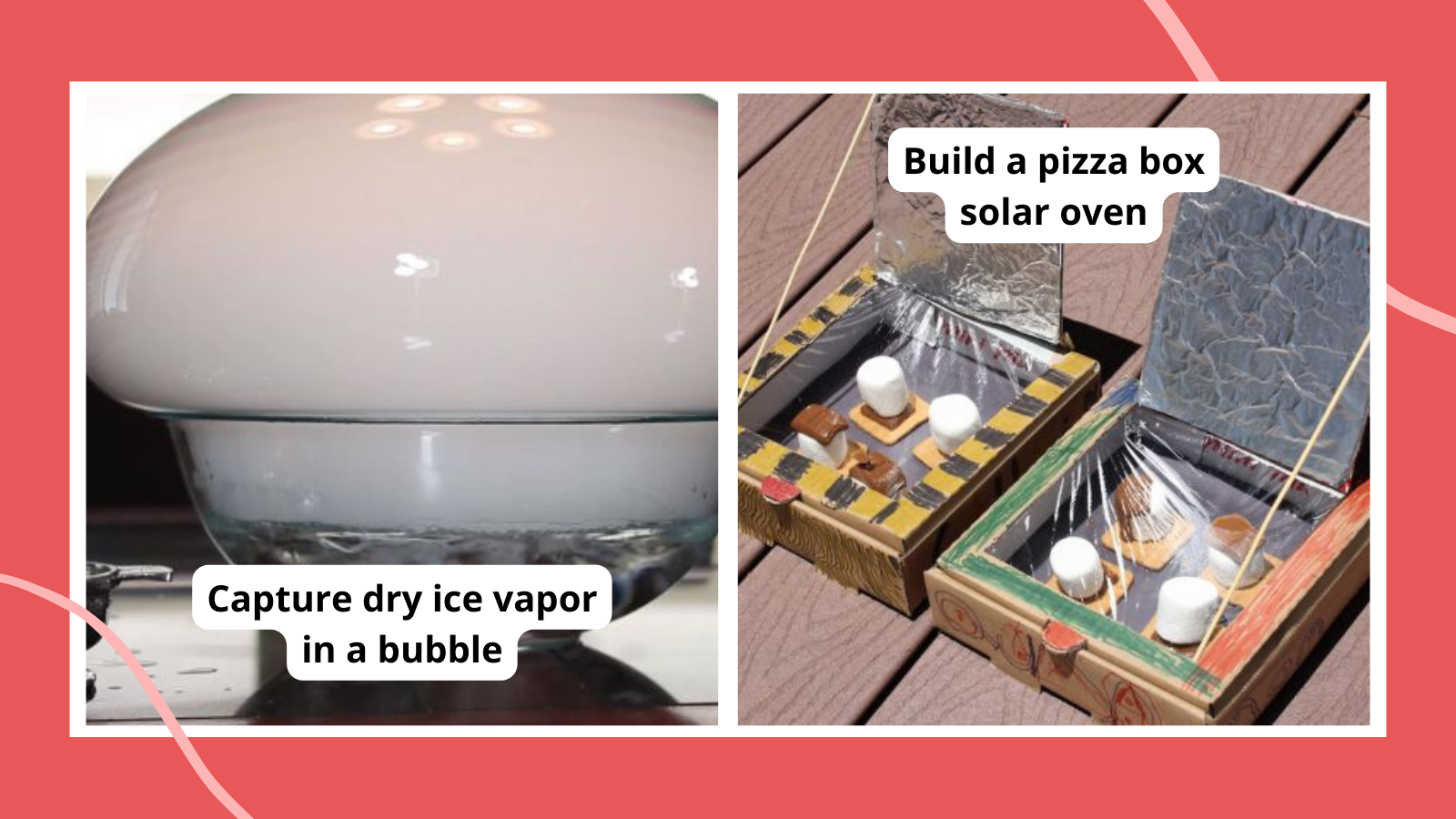
There’s something so fascinating about hands-on science experiments and projects. They make learning so meaningful and so much fun! These 5th grade science projects help kids explore biology, physics, chemistry, and a whole lot more. Try one at the 5th grade science fair, or use a few to liven up your lesson plans.
To make things even easier, we’ve rated every one of these 5th grade science projects based on difficulty and materials:
Difficulty:
- Easy: Low or no-prep experiments you can do pretty much anytime
- Medium: These take a little more setup or a longer time to complete
- Advanced: Experiments like these take a fairly big commitment of time or effort
- Basic: Simple items you probably already have around the house
- Medium: Items that you might not already have but are easy to get your hands on
- Advanced: These require specialized or more expensive supplies to complete
5th Grade Science Fair Projects
Stem challenge 5th grade science projects, 5th grade matter and energy science activities, more 5th grade science projects and activities.
Choosing a science fair project means finding a subject that really interests you and coming up with a unique question to answer. Use some of these 5th grade science fair project ideas to create a cool experiment all your own.
Stop soil erosion with plants
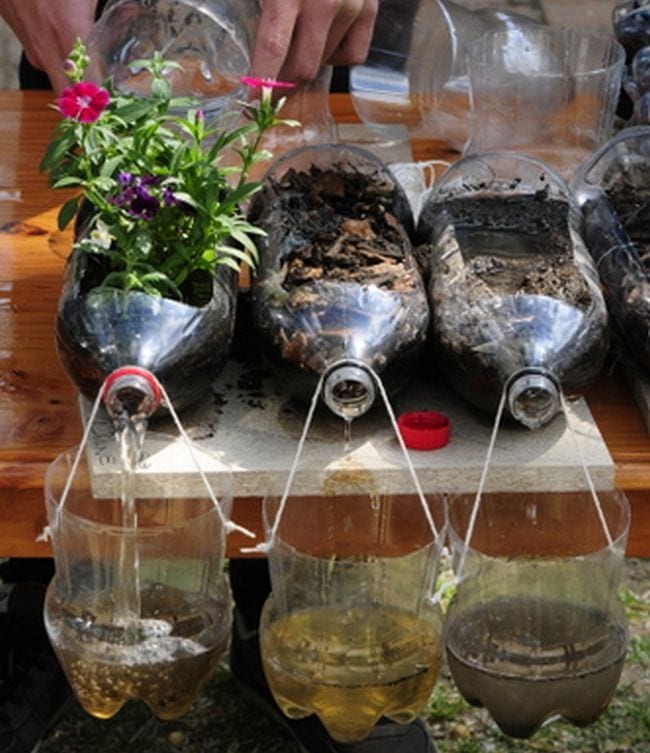
Difficulty: Medium / Materials: Medium
Soil erosion is a serious problem that can lead to natural disasters like landslides as well as causing problems for farmers, who lose valuable topsoil. Try this experiment to learn how plants help keep soil in place naturally, and change up the variables like soil composition or types of plants.
Learn more: Soil Erosion Experiment at Life Is a Garden
Blow square bubbles
Bubble science experiments are always a hit! In this one, kids construct a device to see if they can blow a square bubble instead of a round one.
Discover the delights of decomposition
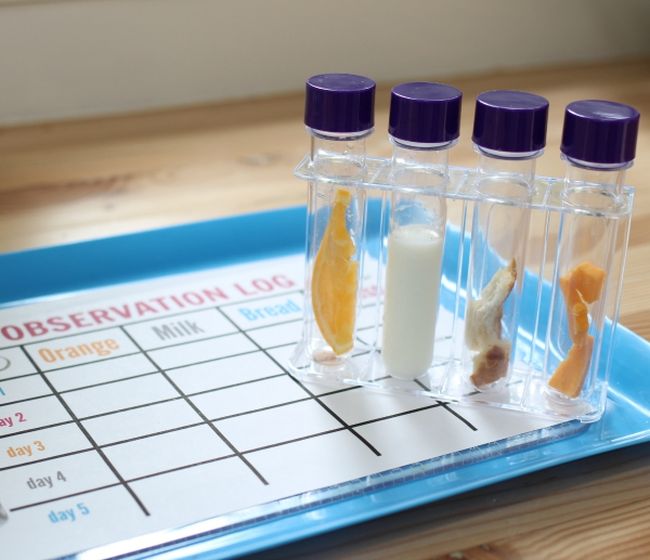
Difficulty: Easy / Materials: Medium
This is a good chance to apply the scientific method and practice your observation skills, using only basic kitchen supplies. Ask the question: “Which food will rot (decompose) the fastest?” Have students hypothesize, observe, and then report their findings. Get a printable observation sheet at the link below.
Learn more: Food Decomposition at No Time for Flash Cards
Mix up some magic sand
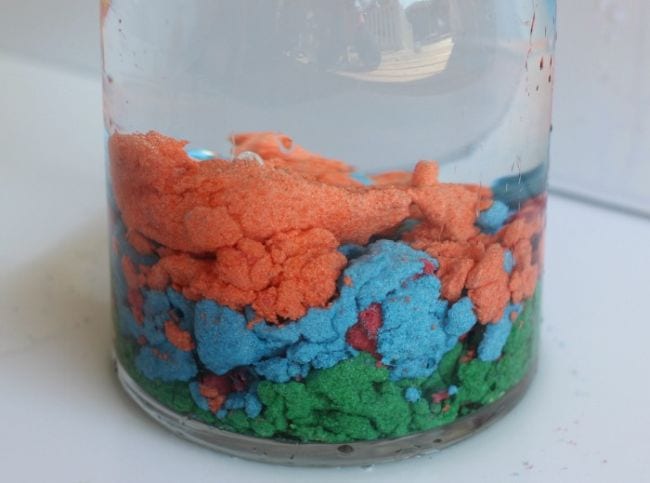
What if you could make sand that was “afraid” of water? This 5th grade science experiment uses waterproofing spray to create you-gotta-see-it-to-believe-it hydrophobic sand.
Learn more: Hydrophobic Sand at Teaching Mama
Make your own bouncy balls
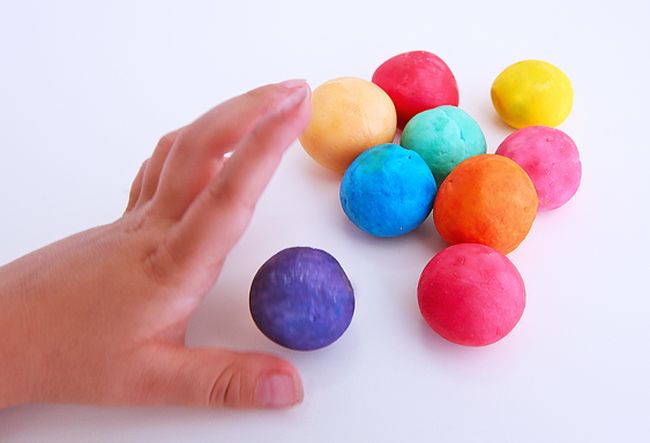
Students learn about polymers as they mix borax with cornstarch, glue, and water in this playful experiment. Experiment with size, shape, and ingredients to see which work best.
Learn more: DIY Bouncy Balls at Babble Dabble Do
Study water filtration
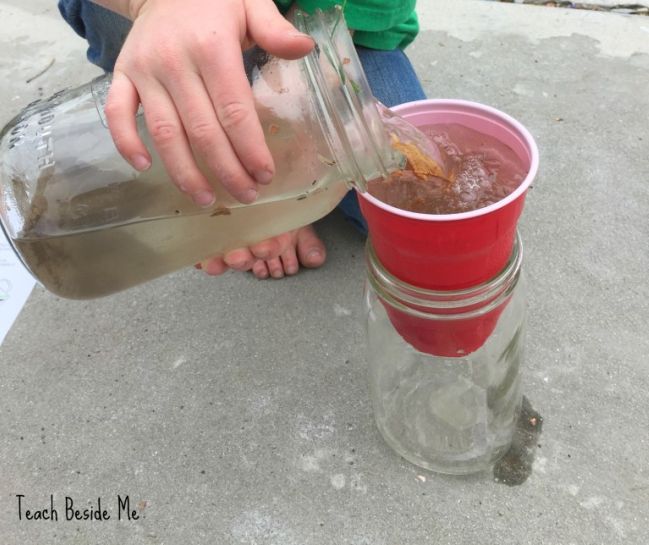
Difficulty: Easy / Materials: Basic
See the process of water purification firsthand. Layer coffee filters, sand, and gravel in the bottom of an empty cup punched with holes. Place the cup in an empty jar, pour in dirty water, and watch what happens. Mix up the variables, and you’ve got a cool 5th grade science fair project.
Learn more: Water Purification at Teach Beside Me
Find out if a dog’s mouth is cleaner than a human’s

Settle an age-old debate with this 5th grade science fair project. Collect saliva from both humans and canines with cotton swabs and place each sample in labeled petri dishes. Check the bacterial colonies in each and compare the results.
Learn more: Dog’s Mouth Project at Sciencing
Explore basic genetics

Send your students on a quest to find out more about their genes and inherited traits. The link below includes a printable chart they can use to learn about recessive and dominant genes.
Learn more: Inherited Traits at Education.com
Design a biosphere
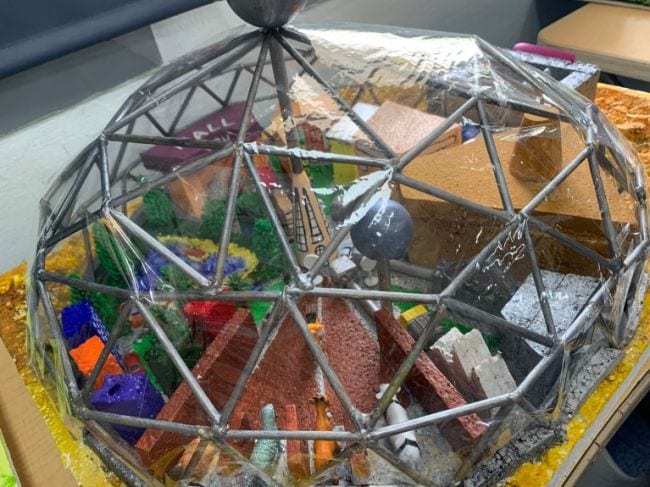
This project really brings out kids’ creativity and helps them understand that everything in a biosphere is really part of one big whole. You’ll be overwhelmed by what they come up with!
Learn more: Biosphere Project at Laney Lee
Measure heat capacity of different liquids
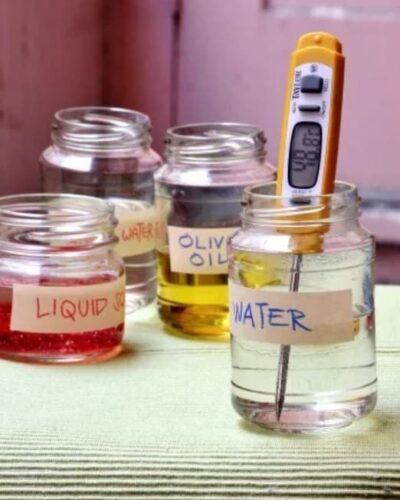
Your students will venture into the world of chemistry with this experiment that tests the heat capacity of different liquids, such as salt water, olive oil, and liquid soap, using a hot plate . They’ll incorporate math into their experiment when they plot their results!
Learn more: Heat Capacity at Education.com
A good STEM challenge can spark a terrific science fair project too. These also make terrific classroom activities for 5th grade science students.
Assemble an automatic water fountain
Water fountains were around long before humans harnessed the power of electricity to make pumps. Learn how they worked with this STEM challenge science project for 5th grade.
Race down a LEGO zip line
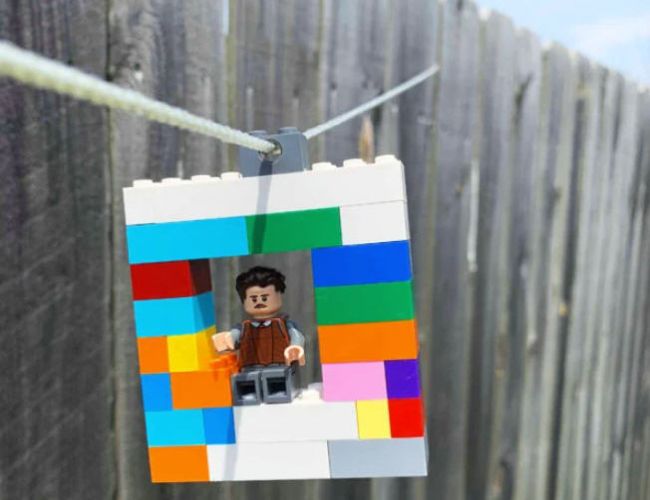
Every kid loves LEGO bricks, so incorporate them into your 5th grade science activities! Challenge kids to design and build their own zip line. You can set the parameters, like distance and slope, then let students get to work.
Learn more: Zipline at 123 Homeschool 4 Me
Slow your roll
Ball-run challenges are always fun, but this one has a twist. Your goal is to build a run that gets the ball to the bottom taking the longest time possible! This requires kids to think about friction, slopes, and other creative features.
Fly clothespin airplanes
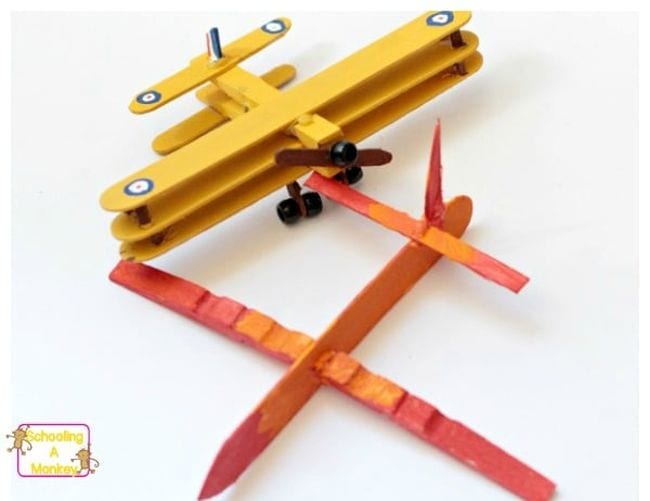
Put your 5th grade science students’ engineering skills to the test. Provide them with clothespins and wood craft sticks , and challenge them to build a realistic airplane. Bonus points if it can actually fly!
Learn more: Clothespin Airplane at STEAMsational
Spin a candle-powered pinwheel
Prove that hot air rises by using candles to spin a homemade pinwheel. Then experiment to see how the number of candles affects the spinning speed. (As always, make sure kids use fire under safe conditions.)
Set off a chain reaction
Learn about potential and kinetic energy when you try this cool 5th grade science experiment. All you need are wood craft sticks and a bit of patience.
Bounce on a trampoline
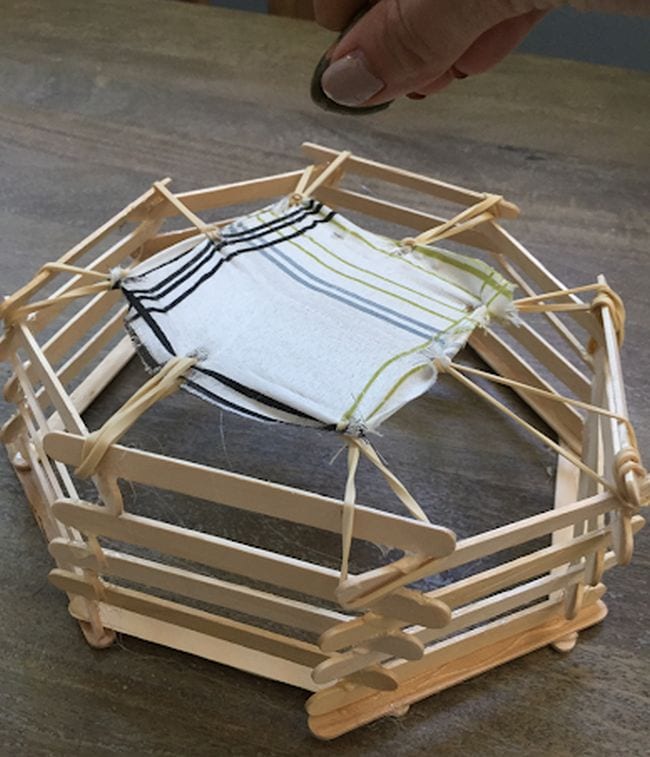
Kids love bouncing on trampolines, but can they build one themselves? Find out with this totally fun STEM challenge. Plus, check out more 5th grade STEM challenges here.
Learn more: Trampoline STEM Challenge at Student Savvy
Build a solar oven
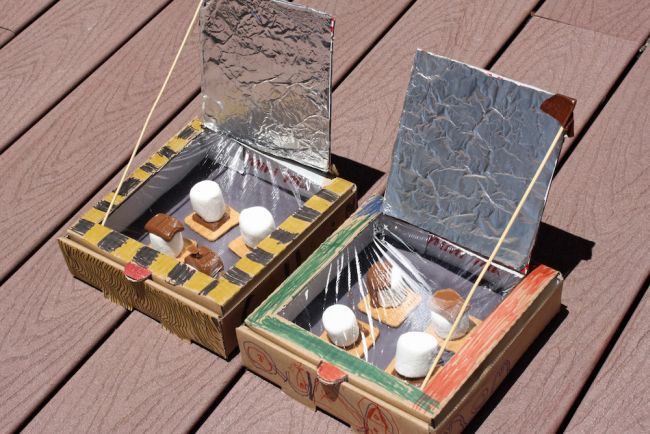
Learn about the value of solar energy by building an oven that cooks food without electricity. Enjoy your tasty treats while discussing ways we can harness the energy of the sun and why alternative energy sources are important. ( Love edible science projects? Get more ideas here. )
Learn more: DIY Solar Oven S’mores at Desert Chica
Launch your own bottle rocket
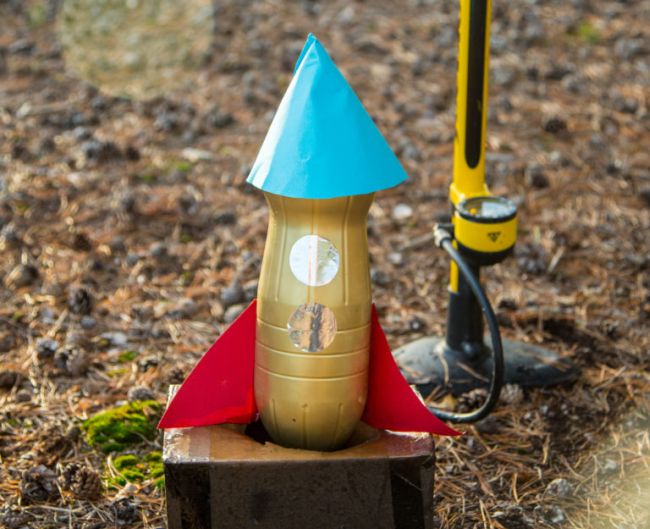
Blast off with a few supplies and a little help from the laws of motion. Encourage kids to design and decorate their rockets first and see which one can fly the highest!
Learn more: Bottle Rocket at Science Sparks
Peer through a cardboard microscope
Microscopes can be pricey, so make your own at home! This is the kind of 5th grade science fair project that will really wow the judges.
Build a snack machine
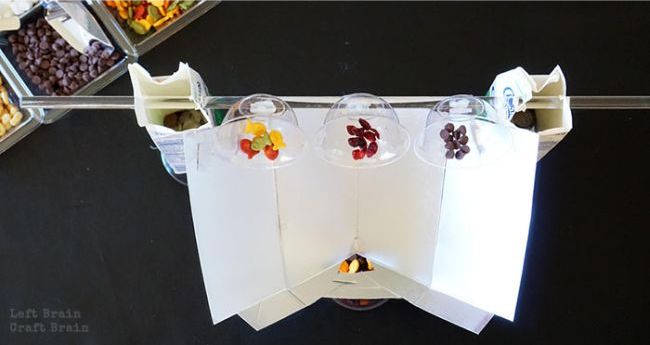
Incorporate everything students learn about simple machines into one project when you challenge them to build a snack machine! Using basic supplies, they’ll need to design and construct a machine that delivers snacks from one location to another. ( Get more candy experiments here. )
Learn more: Snack Machine Challenge at Left Brain Craft Brain
Use rubber bands to sound out acoustics
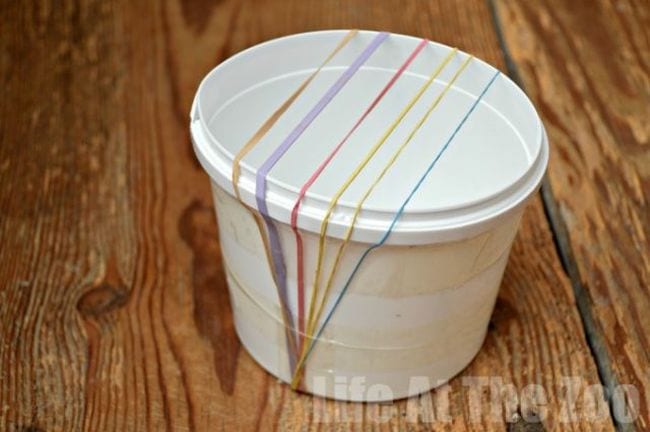
Explore the ways that sound waves are affected by what’s around them using a simple rubber band “guitar.” (Your students will absolutely love playing with these!)
Learn more: Rubber Band Guitar at Science Sparks
Assemble Archimedes’ screw
Difficulty: Medium / Materials: Basic
It’s amazing how often science looks like magic—until you understand the principles behind it. Such is the case with the simple pump known as Archimedes’ screw. It’s easy to build your own and makes for a cool 5th grade science fair project.
Recycle newspaper into an engineering challenge

It’s amazing how a stack of newspapers can spark such creative engineering. Challenge students to build a tower, support a book, or even build a chair using only newspaper and tape.
Learn more: Newspaper Tower at STEM Activities for Kids
Construct a sturdy bridge
To design a safe bridge that meets the needs of the community, engineers must understand the capabilities and limitations of the bridge. This project is great for budding 5th grade engineers as they simulate constructing a bridge that serves its purpose and keeps community members safe.
Every 5th grade science curriculum is different, but many include some common concepts. Learn about the states of matter, matter and its interactions, and energy science with these neat 5th grade activities.
Model the states of matter
Create simple models to show the arrangement of molecules in solids, liquids, and gasses. Ping-Pong balls are perfect for this. ( Find more states of matter activities here. )
Drink root beer floats
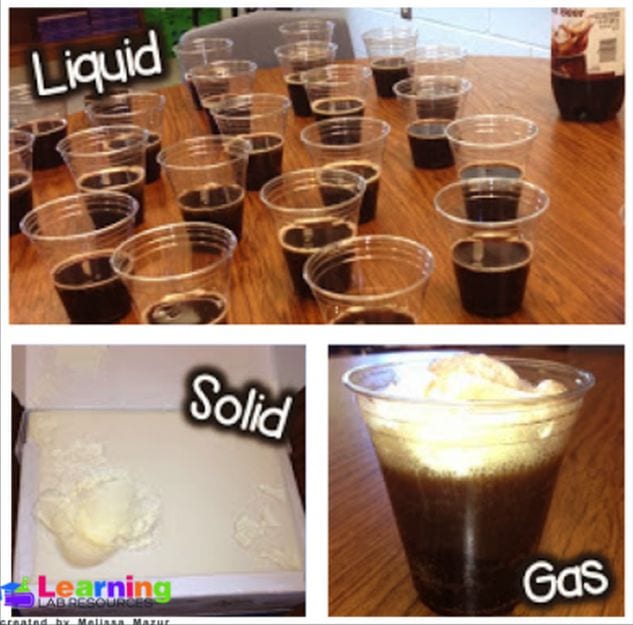
This is our favorite way to learn about the various states of matter! Treat time becomes a learning lesson with this 5th grade science matter activity.
Learn more: Teaching Matter With Root Beer Floats at Learning Lab Resources
Fill a bubble with dry ice vapor
Discover the science of sublimation by turning dry ice from a solid directly into a gas. Then play around with surface tension as the resulting vapor fills a giant bubble. This one is so cool to see in action!
Discover density with hot and cold water

There are a lot of cool science experiments you can do with density. This one is extremely simple, involving only hot and cold water and food coloring.
Learn more: Hot and Cold Water Density at STEAMsational
Learn to layer liquids
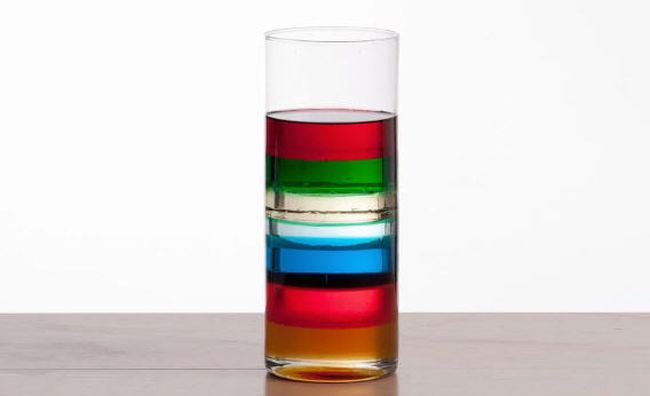
This density demo is a little more complicated than other science projects, but the effects are spectacular. Slowly layer liquids like honey, dish soap, water, and rubbing alcohol in a glass. Your 5th grade science students will be amazed when the liquids float one on top of the other like magic (except it is really science).
Learn more: Liquid Density at Wonder How To
Light(ning) it up indoors
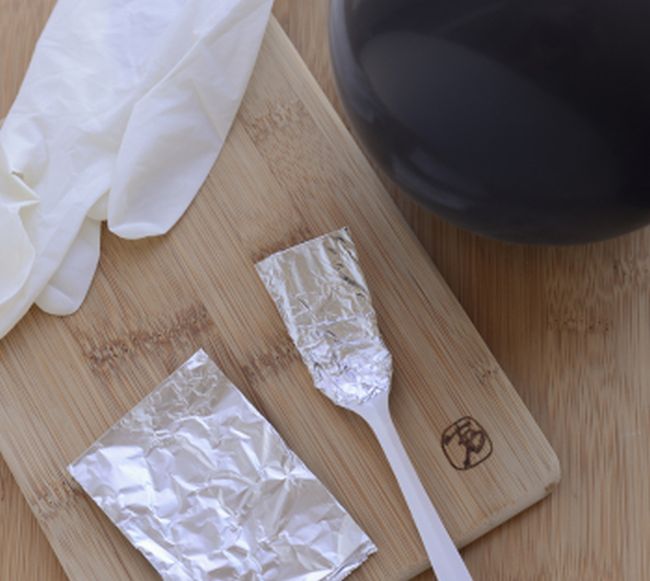
On a cool, low-humidity day, use a foil-covered fork and a balloon to create a “lightning storm” in your classroom. Turn down the lights to give students a better view of the static electricity you’re creating.
Learn more: Indoor Lightning at Education.com
Create convection currents
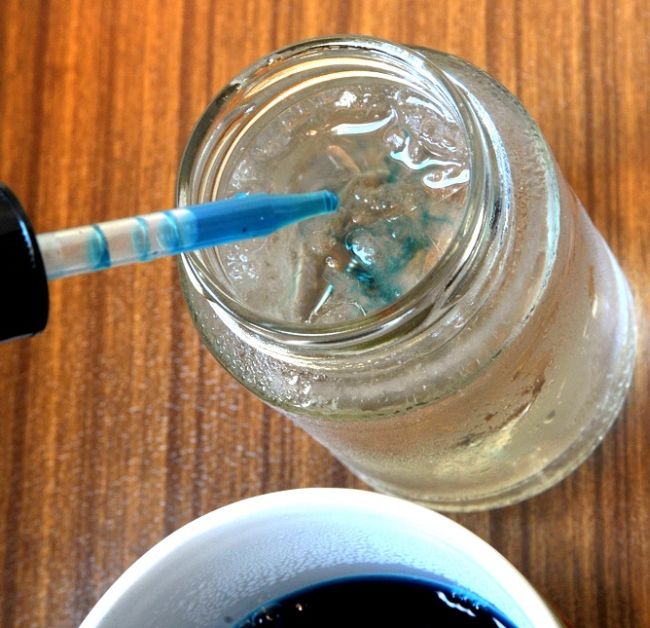
This easy experiment uses hot and cold liquids and some food coloring to explore the thermal and kinetic energy that creates convection currents. Take things a step further and research how convection currents work in large bodies of water, like oceans.
Learn more: Heat Convection at Education.com
Sink or swim with soda cans
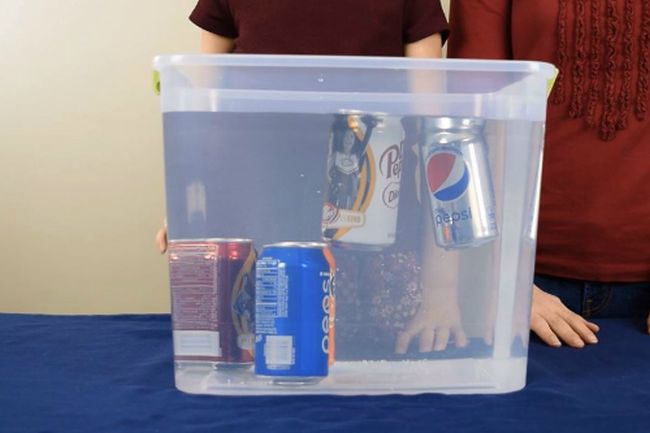
Here’s another easy density experiment. Place unopened cans of regular and diet soda into a bin of water to see which float and which sink. The differences are due to the use of sugar and artificial sweeteners.
Learn more: Sink or Swim at Cool Science Experiments HQ
Find out if water conducts electricity
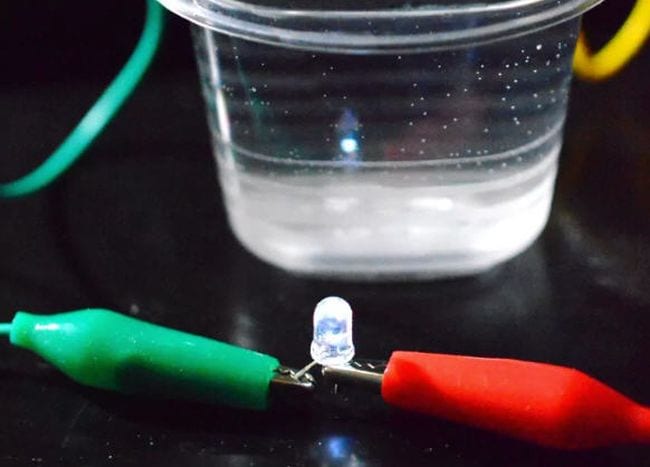
We always tell kids to get out of the water as a storm approaches. This 5th grade science project helps explain why. (Conductivity vs. non-conductivity is one of the properties of matter too.)
Learn more: Electricity and Water at Rookie Parenting
Blow up a balloon—without blowing
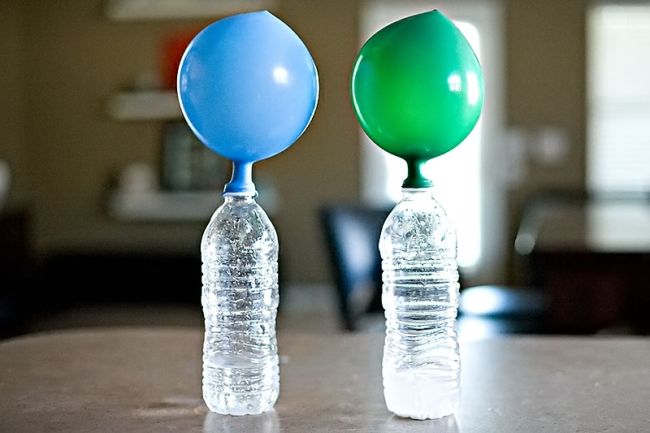
This is the classic science experiment that helps you teach the reactions between acids and bases, plus what happens when you mix different substances together. Fill a bottle with vinegar and a balloon with baking soda. Fit the balloon over the top, shake the baking soda down into the vinegar, and watch the balloon inflate.
Learn more: Balloon Reaction at All for the Boys
Use these hands-on science activities to spice up your lesson plans or as enrichment projects for science-loving kids to try at home.
Erupt a salt dough volcano
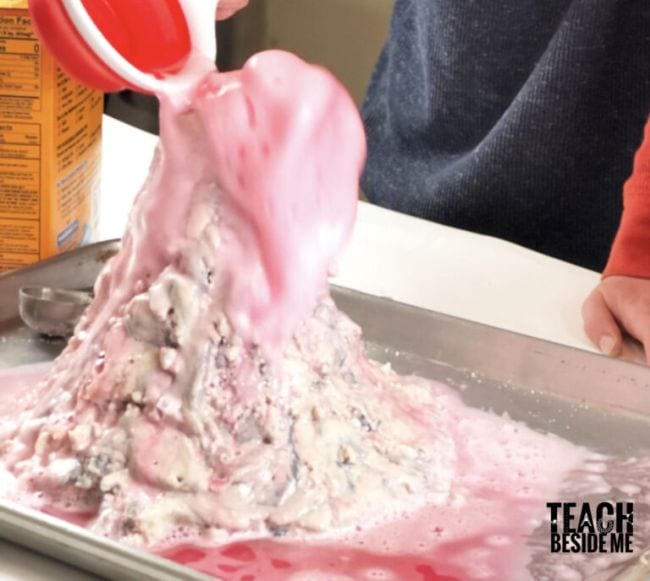
Need a 5th grade science fair project? Go with a classic: the volcano ! This one’s made from salt dough, which is easy to work with and inexpensive to make.
Learn more: Salt Dough Volcano at Teach Beside Me
Peel an orange to understand plate tectonics
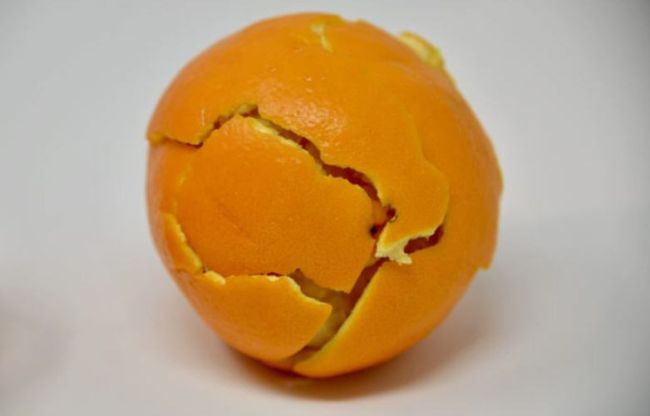
If students are learning earth science, use an orange to make plate tectonics easier to understand. Peel it, then reassemble it and look at the pieces as plates floating on the Earth’s mantle.
Learn more: Orange Tectonics at Science Sparks
Discover the strength of eggshells
We think of eggshells as very fragile, but their shape makes them surprisingly strong. Try this experiment to learn why arches are such a useful shape in architecture.
Demonstrate the “magic” leakproof bag
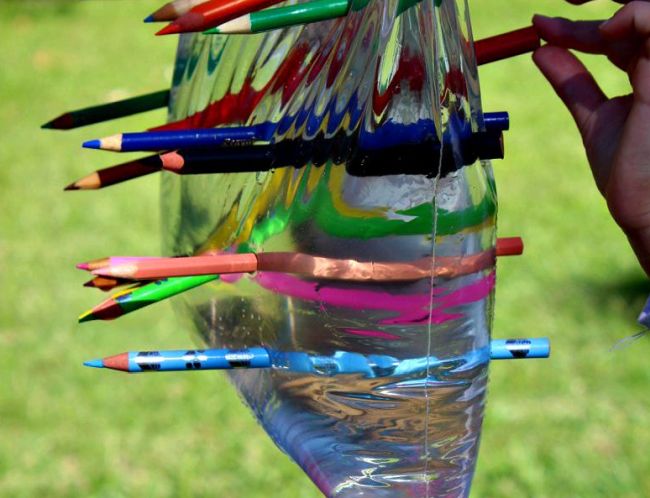
So simple and so amazing! All you need is a zip-top plastic bag, sharp pencils, and some water to blow your students’ minds. Once they’re suitably impressed, teach them how the “trick” works by explaining the chemistry of polymers.
Learn more: Magic Leakproof Bag at Paging Fun Mums
Explore the science of glow sticks
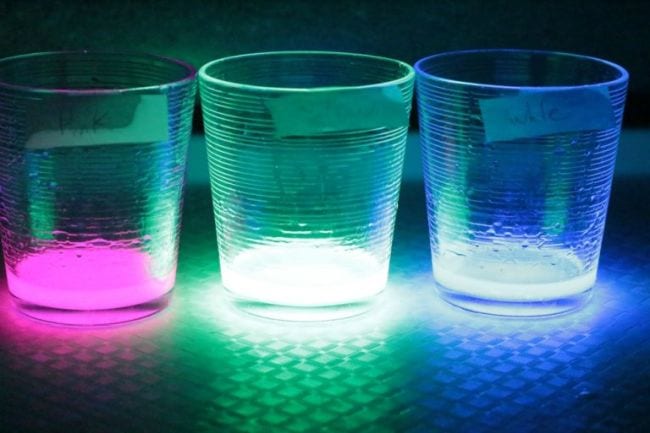
Glow sticks are always a big hit with kids, so they’ll have a terrific time learning about the chemical reactions that make glow sticks work.
Learn more: Glow Stick Science Experiment at A Dab of Glue Will Do
Grow crystal snowflakes
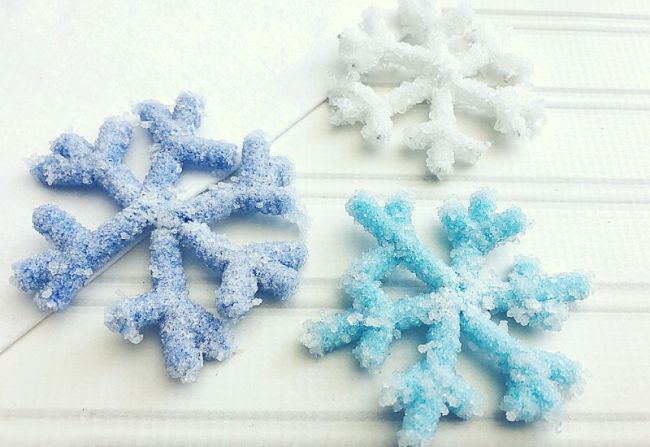
Kids love crystal projects, and this one results in winter decorations for your classroom. Your students will learn about supersaturated solutions and crystallization. ( See more winter science activities here. )
Learn more: Crystal Snowflakes at Little Bins for Little Hands
Escape from quicksand
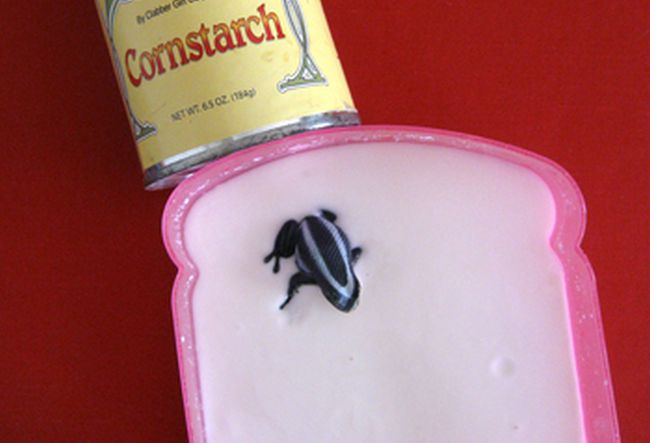
Dive deep into the science of quicksand and learn about saturation and friction along the way. You’ll create a small “quicksand” pool from cornstarch and water, then experiment to find out the best ways to escape.
Learn more: Quicksand Experiment at Education.com
Watch the heart beat with marshmallows
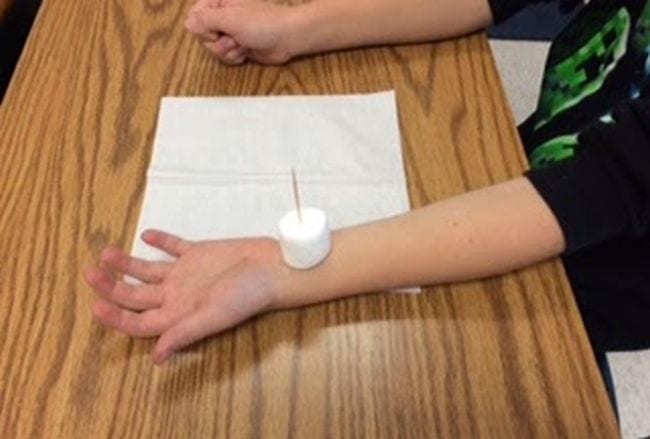
If you can get your 5th grade science class to quiet down enough for this one, they might be able to see a marshmallow jump with each beat of their hearts!
Learn more: Heartbeat Marshmallows at Growing Grade by Grade
Make a foil bug walk on water
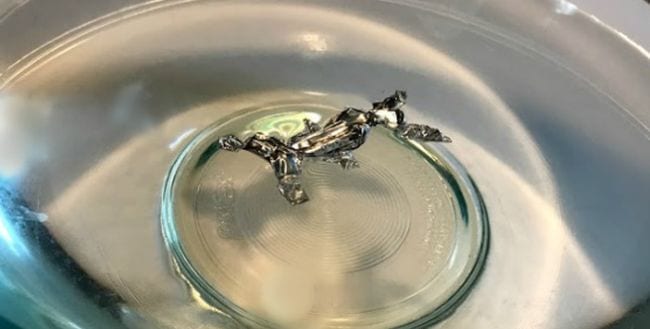
Surface tension allows water striders to dance across the surface of the water. Re-create this scientific phenomenon with little “bugs” made of aluminum foil.
Learn more: Foil Water Strider at The Homeschool Scientist
Find out how bile breaks down fat
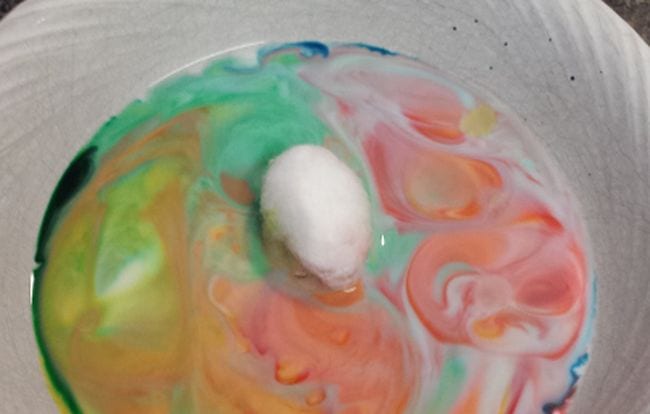
Learning about the digestive system? This 5th grade science demo explores the purpose of the bile produced by the liver, which breaks down fat.
Learn more: Bile Experiment at Simple Southern
Construct a homemade lava lamp
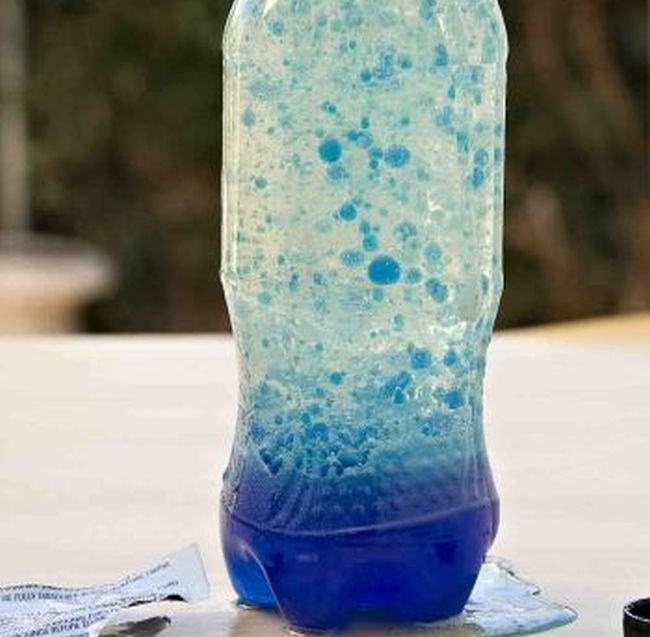
This 1970s trend is back—as a 5th grade science project! Learn about acids and bases while putting together a totally groovy lava lamp.
Learn more: Homemade Lava Lamp at Education.com
Investigate osmosis with gummy bears
Gummy bears are not only tasty, but they can also help teach your 5th graders about the concepts of osmosis and equilibrium as well as solvents and solute.
Replicate a sunset
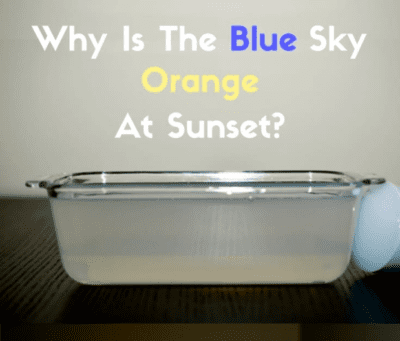
With just water, milk powder, a flashlight, and a glass dish, your 5th graders will investigate why the sky appears to change colors as the sun sets.
Learn more: Sunset Sky at Rookie Parenting
Defy gravity with floating water
This one might cause a bit of a mess, but it’s only water, and it’s all in the name of your students discovering air pressure. All you’ll need is a cup, index card, water, and crossed fingers that your classroom doesn’t become a puddle!
Model constellations

Space delights students of all ages. The mystery and mystique is intriguing, and creating a constellation out of pipe cleaners is a fun STEM activity to explore the night sky.
Learn more: Constellations Model at STEAM Powered Family
Continue the STEM learning with these 5th Grade Math Games for Teaching Fractions, Decimals, and More .
Plus, sign up for our newsletters to get all the latest teaching tips and ideas straight to your inbox..
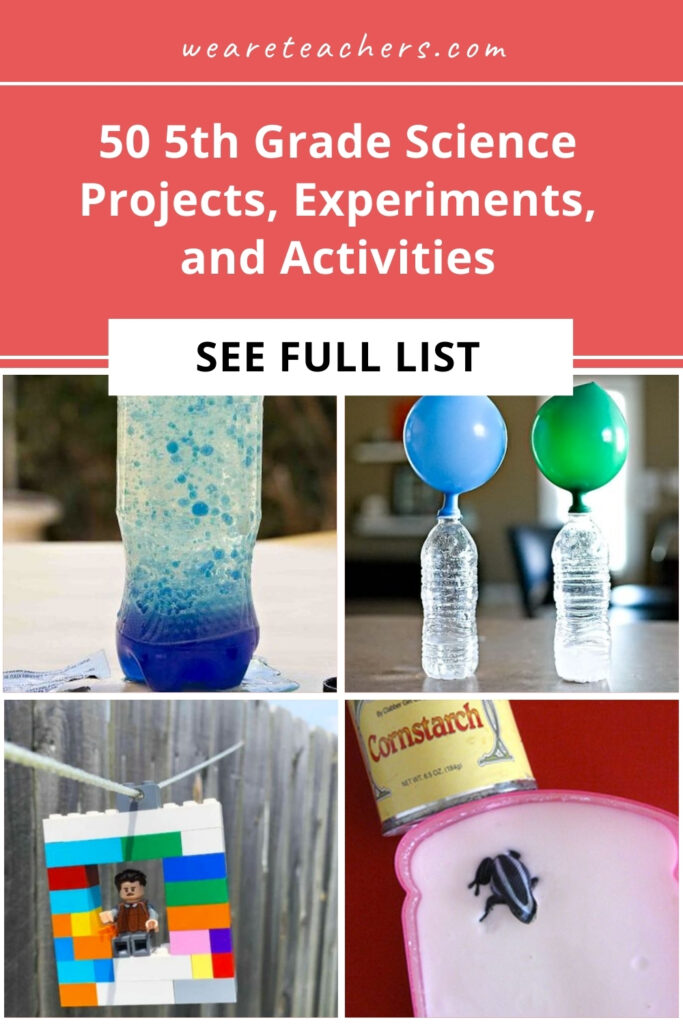
You Might Also Like
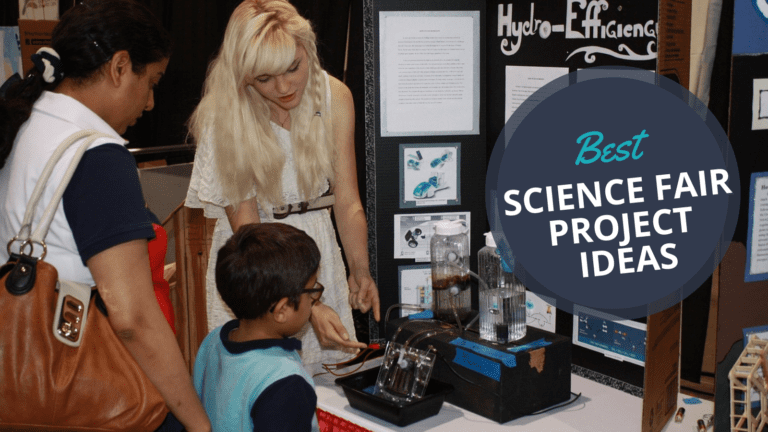
The Big List of Science Fair Project Ideas, Resources, and More
Options for every age, interest, and skill level! Continue Reading
Copyright © 2023. All rights reserved. 5335 Gate Parkway, Jacksonville, FL 32256
Science Fair Projects for 5th Grade: Teacher's Guide
Finding meaningful science fair projects for 5th graders can be a real challenge for teachers.
This comprehensive guide for teachers promises to make planning and executing winning science fair projects for 5th grade easy and enjoyable.
You'll discover the top 10 project ideas, step-by-step instructions for developing testable experiments, gathering materials, recording observations, analyzing data, creating visual displays, tips for captivating presentations, and evaluating outcomes to celebrate student success.
Introduction to Science Fair Projects for 5th Grade
Science fair projects provide an engaging way for 5th grade students to explore science topics that interest them. As a teacher, guiding students through the process of developing a science fair project teaches important research, critical thinking, and communication skills. This guide offers tips and resources to help 5th grade teachers mentor students in creating meaningful science fair projects.
Exploring the Benefits of Science Fair Projects
Science fair projects have many benefits for 5th grade students:
- Spark interest and engagement in STEM topics
- Build research, experiment design, and data analysis skills
- Boost confidence through independent investigation of a topic
- Allow creativity and choice in project development
- Develop scientific thinking and communication abilities
By participating in science fairs, students gain exposure to the scientific method and learn how to conduct experiments.
Selecting Winning Science Fair Topics
Choosing an appropriate topic is key to developing a successful science fair project. Consider these strategies for helping 5th graders select a topic:
- Brainstorm areas of interest from the 5th grade science topics list
- Determine if a topic can be tested through an experiment at home
- Ensure required materials are easily accessible
- Match topics to students' abilities and skill levels
Some winning 5th grade science fair projects have focused on testing the effects of different variables on plant growth, modeling weather phenomena, investigating properties of matter, and more.
Crafting a Compelling Research Question
A strong research question guides the entire science experiment. Here are tips for developing a focused research question:
- Frame the question around testing a specific variable
- Make the question clear, narrow, and answerable through an experiment
- Use the scientific method to inform the phrasing of the question
For example, "How does the amount of sunlight affect the growth rate of bean plants?" is an effective research question.
What are the top 10 science fair project?
Here are 10 great science fair project ideas for 5th grade students:
1. Investigating the Effect of Different Soil Types on Plant Growth
This project tests how plants grow in different soil types like clay, sand, potting mix, etc. Students can measure plant height over time to compare growth rates.
2. Measuring the Effect of Music on Memory
Students can test how different music genres affect memorization of words or numbers. A control group with no music can be used for comparison.
3. Creating a Solar Water Heater
Using basic materials, students can build a solar powered water heater to test temperature changes over time. This explores renewable energy.
4. Investigating the Effect of pH on Enzyme Activity
By changing pH, students can measure how enzyme activity is affected. This shows how acidity impacts chemical reactions in living things.
5. Measuring the Effect of Temperature on Electrical Resistance
Using wire and a multimeter, the resistance of conductors can be tested at different temperatures. This demonstrates scientific principles.
6. Building a Simple Wind Turbine
Students can construct small wind turbines to power LED lights. This explores mechanical energy conversion.
7. Testing Strength of Different Bridge Designs
Using materials like popsicle sticks or toothpicks, students can build different bridge models and test their strength by adding weights until structural failure. This is an engineering design challenge.
8. Investigating Which Materials Best Insulate Heat
By timing how long ice cubes last when wrapped in various materials, insulation properties can be compared. Everyday items like cotton, foil, and Styrofoam can be tested.
9. Observing Osmosis in Cells
Using eggs, students can observe the process of osmosis and diffusion across semi-permeable membranes. This demonstrates biology concepts.
10. Testing Paper Airplane Designs
Students can build different paper airplane models and measure flight distance and duration. Aerodynamics principles are explored through iterative testing.
What is the best science project for Class 5?
Here are some of the best science fair project ideas for 5th grade students:
Bouncing on a Trampoline
This project looks at how the height of a trampoline bounce changes depending on the weight of the person jumping. Students could test different weights and record bounce heights.
The "Magic" Leakproof Bag
Students can create a bag out of a plastic zipper storage bag that seems to defy gravity and doesn't leak water even when turned upside down. This demonstrates air pressure and density.
Clothespin and Popsicle Stick Airplanes
Students can build simple airplanes out of clothespins and popsicle sticks and test how far they fly when launched by hand. They can experiment with different wing shapes and angles.
Tornado in a Bottle
Using a plastic bottle, water, glitter or small pieces of paper, and dish soap, students can create a mini tornado and observe how tornadoes form.
Float or Sink Pop Cans
By crushing pop cans and placing them in water, students can observe differences in density and record whether crushed cans float or sink compared to normal cans.
These are just a few fun and easy science project ideas that demonstrate science concepts like gravity, density, pressure, and forces. Students get hands-on experience coming up with a hypothesis, testing variables, collecting data, and drawing conclusions. And they'll learn some really cool science facts along the way!
What are the topics for grade 5 science?
Here are some of the most common science topics studied in 5th grade:
Earth and Space Science
- Structure and layers of the Earth
- Landforms and changes in the Earth's surface caused by weathering and erosion
- The water cycle
- Weather patterns and severe storms
- The solar system, planets, stars, galaxies
Life Science
- Plant structures and functions
- Plant life cycles and reproduction
- Ecosystems and food chains
- Human body systems and functions
- Animal classification, structures, and adaptations
Physical Science
- Properties and states of matter
- Atoms and molecules
- Energy, heat, light, and sound
- Forces and motion
- Electricity and magnetism
5th graders typically learn about these topics through hands-on activities, experiments, projects, and demonstrations that connect the concepts to real-world examples relevant to where they live. For instance, they may study local weather patterns, plant life cycles in their area, organisms in a nearby ecosystem, or conduct experiments with household materials related to physical science concepts. Tying the learning to their surroundings helps cement understanding.
What are testable questions for science fair projects 5th grade?
Science fair projects allow 5th grade students to explore scientific concepts through hands-on experiments. When coming up with a testable question, it's important to choose a topic that interests your student and can be tested using the scientific method.
Here are some examples of testable questions for 5th grade science fair projects:
How does temperature affect crystal growth?
- Students can grow crystals using different solutions and observe how temperature impacts crystal size and shape. This allows them to learn about states of matter.
How do different liquids affect how quickly an ice cube melts?
- Students can measure how long it takes ice cubes to melt when placed in different liquids like water, oil, soda etc. This teaches them about heat transfer.
How does the angle of a ramp affect the distance a toy car travels?
- Students can build ramps at different angles and test how far toy cars roll down them. This demonstrates concepts of potential and kinetic energy.
How does the amount of light affect plant growth?
- Students can grow plants under different lighting conditions to observe the effects on plant height, leaf number etc. This illustrates photosynthesis and plant biology.
The key is choosing questions that allow students to measure data and draw conclusions. This teaches the scientific method and critical thinking skills. Review science fair project ideas for 5th grade when helping your student select a topic.
sbb-itb-bb2be89
Preparing and executing the experiment.
Executing a successful science experiment requires careful preparation and precise execution. As a teacher guiding 5th graders through science fair projects, focus on facilitating engaging hands-on learning experiences.
Gathering Data and Materials for Science Experiments
- Recommend students use household materials that are safe and easy to acquire. Simple materials like paper, cardboard, basic craft supplies, food items, and recycled containers work well.
- Have students research reliable sources to gather background information and data to inform their hypothesis and procedures. Useful sources include science textbooks, library books, museum websites, and other vetted educational sites.
- Compile a classroom kit of basic supplies like tape, scissors, rulers, notebooks, and pencils to have on hand. Consider creating a sharing system for students to borrow specialty items as needed.
Implementing Procedures Safely and Accurately
- Supervise all experiments to ensure safety protocols are followed properly. Review safety rules and demonstrate proper handling of any potentially hazardous materials.
- Guide students to follow procedures precisely as outlined to control variables and yield reliable results. Encourage recording detailed notes on each step.
- Allow flexibility for iterations and improvements if initial trials reveal flawed procedures. Discuss troubleshooting techniques.
Recording Observations with Precision
- Instruct students to record qualitative observations through detailed notes, drawings, photos, or videos. Emphasize thorough, objective descriptions.
- Have students take precise quantitative measurements with metric rulers, scales, timers, thermometers, etc. Stress the importance of accurate data.
- Consider using student-friendly apps, like Google Science Journal, to assist with gathering observational data.
Organizing and Analyzing Data Like a Scientist
- Help students organize recorded observations into user-friendly tables, charts, and graphs. Online tools like Google Sheets simplify data analysis.
- Explain basic statistical concepts like mean, percentages, rates of change, correlation vs causation, and margin of error. Guide analysis appropriate for 5th grade level.
- Compare results to background information gathered. Did the data support or contradict the original hypothesis? Why?
Drawing Conclusions from Experimental Results
- Facilitate constructive discussion around interpreting results and assessing hypotheses. What conclusions can reasonably be made given the data? How might the experiment be refined and expanded in future trials?
- Stress that "failed" experiments still provide learning opportunities if students can thoughtfully analyze their procedures, observations, and conclusions to determine improvements for next time. The scientific process involves ongoing questioning, testing, and refinement of ideas.
With thoughtful mentorship, 5th grade science projects grant meaningful opportunities to engage students in core aspects of the scientific process. Patience and creativity are key to guiding young scientists as they build critical thinking skills through hands-on discovery and analysis.
Creating a Standout Science Fair Presentation
Teachers can provide guidance to help students create an impactful science fair presentation that clearly communicates their project and findings.
Developing a Clear and Engaging Presentation
- Have students outline key sections to include in their presentation:
- Introduction
- Materials & Methods
- Suggest students make supplements like posters, models, or prototypes to showcase the project.
Incorporating Visuals and Science Fair Boards
- Encourage the use of charts, graphs, photos to present experiment data and results.
- Colorful visuals grab attention and illustrate findings.
Assembling the Science Fair Board with Creativity
- Use borders, title headers, and section dividers to organize display boards.
- Incorporate photos, diagrams, and other graphics to showcase the project.
- Utilize color strategically to highlight important elements.
Practicing the Oral Presentation for Impact
- Have students rehearse presenting to build confidence.
- Focus on clearly explaining the science concept.
- Prepare for likely questions to demonstrate knowledge.
Showcasing the Project at the Science Fair
- Strategically place projects to maximize foot traffic and visibility.
- Have students engage fairgoers to explain their project and findings.
- Collect feedback for students to help further develop projects.
With thorough preparation and creative presentation, students can effectively showcase their science fair projects and communicate experiment outcomes. Teachers play a key role in guiding the development of impactful science fair displays.
Evaluating and Reflecting on Science Fair Outcomes
Teachers can utilize several methods to evaluate student learning and development of science process skills through science fair projects.
Reflecting on Student Growth and Science Skills
- Have students complete self-reflection forms about their research process, including questions like:
- What science concepts did you learn through this project?
- What research skills did you develop or improve?
- What challenges did you face and how did you overcome them?
- Assign journal prompts for students to write about their science fair experience, such as:
- Describe the most interesting thing you learned while doing your science project.
- What science process skills (observing, inferring, predicting, etc.) did you use?
- Create rubrics to assess science process skills like developing a hypothesis, designing procedures, collecting and analyzing data, drawing conclusions, and communicating findings.
Gathering Feedback from Judges and Peers
- Survey science fair judges on project qualities like creativity, effort, scientific thought, and skill development.
- Have students share constructive critiques on peers' projects.
- Encourage audience members to leave feedback or ask engaging questions.
- Review judges' rubrics and comments for areas of growth.
Evaluating Learning Objectives Through Projects
- Align science fair projects to curriculum standards for scientific investigation.
- Create project guidelines and rubrics that assess specific learning objectives.
- Evaluate projects on the degree students demonstrate target skills like:
- Asking scientific questions
- Developing models
- Planning investigations
- Analyzing data
- Using mathematical thinking
- Constructing explanations
- Engaging in arguments from evidence
Adjusting Teaching Approaches Post-Science Fair
- Identify common gaps in understanding or skill that projects revealed.
- Differentiate instruction going forward, providing extra support in challenging areas.
- Update science units and activities to better scaffold key science and engineering practices.
- Reflect on how science fairs can be improved to maximize learning.
Innovative Science Fair Project Ideas for 5th Grade
Science fair projects allow 5th grade students to explore scientific concepts through hands-on experiments and investigations. Choosing an innovative idea can help spark curiosity and engagement. Here are some creative science fair project suggestions suitable for 5th graders.
Science Fair Projects for 5th Grade at Home
- Test how different liquids affect the buoyancy of an egg. This allows students to learn about density at home using common household materials.
- Explore how sugar affects the rising process of yeast dough. Students can observe biological processes using ingredients found in most kitchens.
- Investigate how acidity impacts plant growth by watering plants with liquids of different pH levels. Everyday materials like lemon juice, vinegar, and baking soda can be used.
Last Minute 5th Grade Science Projects
- Evaluate how different surfaces like carpet, tile, and wood impact the speed of a toy car. This fast experiment teaches concepts of friction and gravity.
- Test how the shape of pasta impacts the time it takes to cook. Students can explore why certain shapes cook faster, learning about geometry.
- Investigate how salt impacts the freezing point of water by freezing salty and plain water samples. This demonstrates states of matter.
5th Grade Science Fair Projects with Food
- Explore how freezing, heating, or mixing different liquids affects a hard-boiled egg inside the shell. Students can apply scientific concepts through edible experiments.
- Test how antioxidants in fruits impact oxidation by leaving apple slices exposed to air. Students can measure browning rates, learning about botany.
- Investigate how acids in vinaigrette salad dressing impact vegetable color. Students can explore concepts of chemistry using familiar foods.
5th Grade Science Fair Projects with Plants
- Analyze how natural and artificial light impacts plant growth by exposing plants to various light sources. This teaches foundations of botany and ecology.
- Explore how microwaving seeds impacts the sprouting ability compared to untreated seeds. Students can learn about plant reproduction through this experiment.
- Test how salt, sugar, vinegar, baking soda, etc. affect the wilting rate of flowers. Students can identify what damages or preserves plants.
Science Fair Projects for 5th Grade Biology
- Investigate how antibiotics impact bacterial growth by exposing cultures to antibiotics. This demonstrates germ theory and microbiology.
- Analyze how different liquids impact an earthworm's ability to move by exposing earthworms to assorted liquids. Students learn about invertebrate biology.
- Explore what insects are attracted to different food baits by leaving various foods outdoors. Students can categorize insects and analyze data.
Conclusion: Celebrating Science Fair Success
Science fairs provide an exciting opportunity for 5th grade students to explore science topics that interest them through hands-on projects. This guide has covered key tips for successfully mentoring students through the process, from choosing a topic to presenting the finished project.
Key Takeaways for 5th Grade Science Fair Projects
- Select an experiment-based project that aligns with your student's interests and grade level standards. Focus on testable questions.
- Set a realistic timeline for research, experimentation, analysis, and putting together the presentation.
- Provide guidance on research skills, scientific method, data collection, and safe procedures.
- Have students reflect on what they learned and how they can build on their project in the future.
Building on Projects for Future Success
Students can continue developing their science fair project by:
- Repeating experiments with different variables or sample sizes
- Competing at school, district, or state-level fairs
- Expanding into a long-term research project across multiple years
- Exploring extensions into engineering, computer science, or mathematics
The science fair experience allows students to build critical thinking, communication, and research skills that will serve them well in future science endeavors.
Related posts
- Spelling Words for 5th Grade: Classroom Activities
- Writing Prompts for 4th Grade: Fostering Creativity
- STEM Activities for Kids: Classroom Integration
- Science Fair Project Ideas for 4th Grade: Simple Experiments
Effective Networking Strategies for Teachers
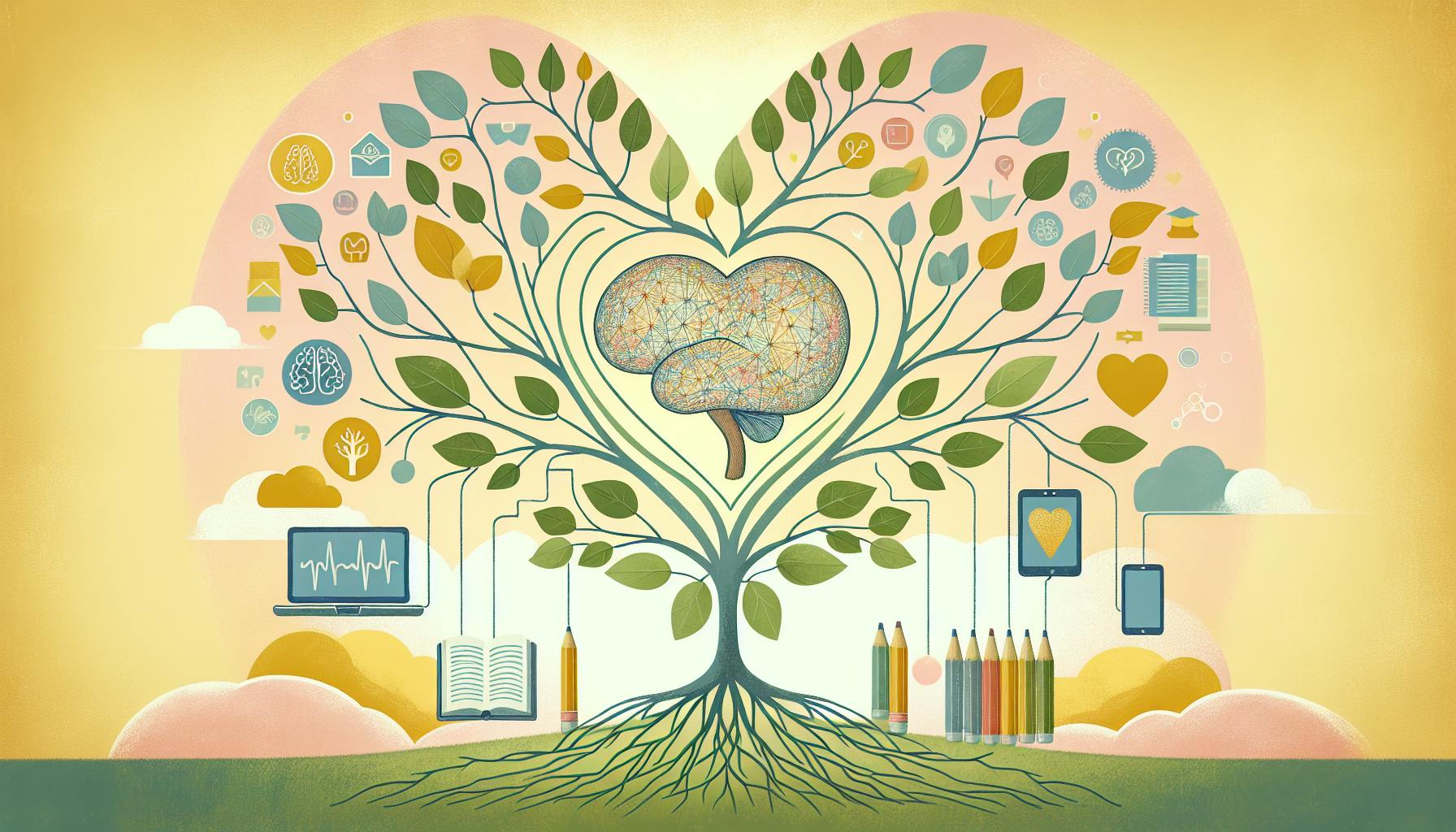
Nurturing Emotional Intelligence: Strategies for Developing Empathy and Self-Awareness in Students

The Art of Questioning: Techniques to Promote Critical Thinking and Inquiry
Become a buddy..
Join 500+ teachers getting free goodies every week. 📚


Science Experiments for 5th Graders
5th Grade is a fantastic age to do science. The kids are old enough to start doing some projects independently and they have an insatiable curiosity and passion for learning. Especially when it is hands on experiments with great wow factor! These science experiments for 5th graders will inspire curiosity, sparke a passion for learning, and excite young scientists. If you are working on lesson plans for your grade 5 students (or 5th year), here are some of our top picks!
The Best Science Experiments for 5th Graders
What you will discover in this article!
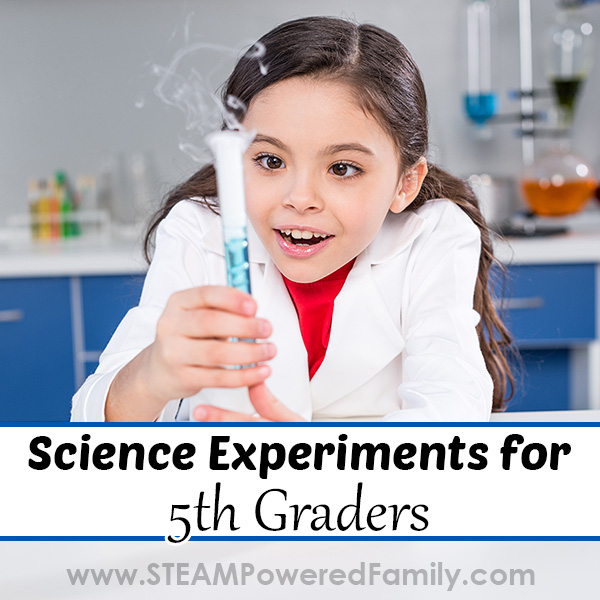
Although the topics covered in 5th grade vary based on where you are in the world, there are some consistent themes that are commonly covered at this age. We’ve looked into syllabuses from all over and came up with this list of topics that appear most often. These themes include lesson plans around:
- Earth and Space
- Lifecycles (plants and animals)
- The human body
- Electricity
- Chemistry (such as crystallization)
- States of Matter
Scientific Method
Phew! That’s a lot! But trust me, it can also be fun! Plus this is based on reviewing school curriculums all around the world. You don’t need to tackle all of these subjects. Or maybe you do if you have a passionate young scientist!
Based on this list of topics I have gathered up some of our favourite science experiments (and STEM projects) that are perfect for adding to your 5th grade science lessons.
5th Grade Science Project Ideas
Oobleck states of matter exploration.
Oobleck is always a hit with kids! We have done a lot of different Oobleck experiments over the years. One of our favourites was a science fair style investigation which also worked on the sense of touch (learning about the body), as we explored different recipes and evaluated how the texture varied with each recipe. But that is just one of many awesome Oobleck ideas we have done. Check them out!
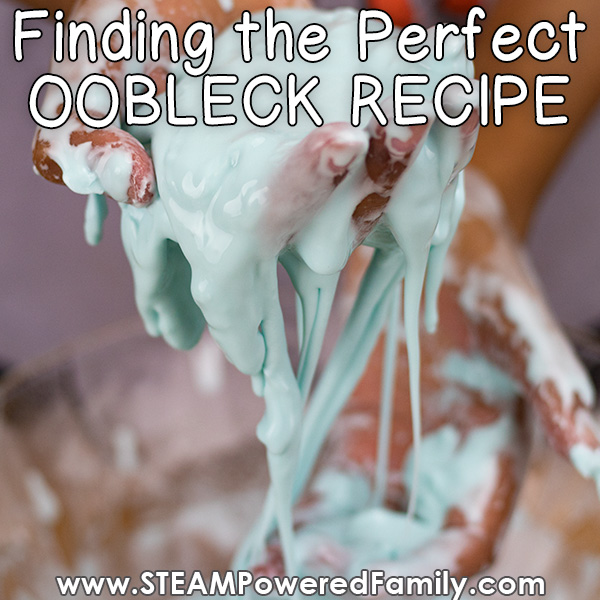
Growing Crystals (Chemistry)
Growing crystals is a great way to introduce students to lab work and chemistry. Usually before this age they have already played around with the basic baking soda and vinegar type reactions , but if they haven’t definitely add those into the mix too. For crystals growing there are lots of different ways to grow crystals. Some use borax which is not available in some countries, but we also have crystal growing options using other solutions such as alum, salt or sugar! With sugar crystals (candy science), you can also explore taste, which ties into the human body studies too.
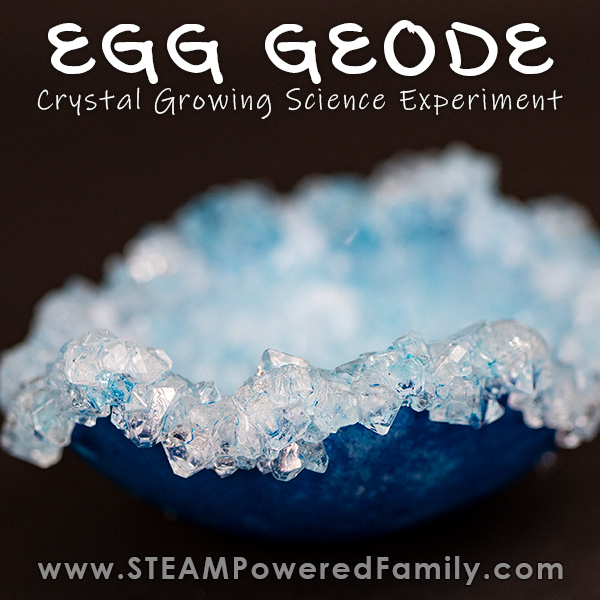
Building a Heart Model
Learning about the human body is fascinating and important. We want kids to understand their bodies, how they work, and how to properly care for their bodies. One of our favourite body learning activities was building a heart model that we made beat and move “blood” around. It was a great project for 5th years!
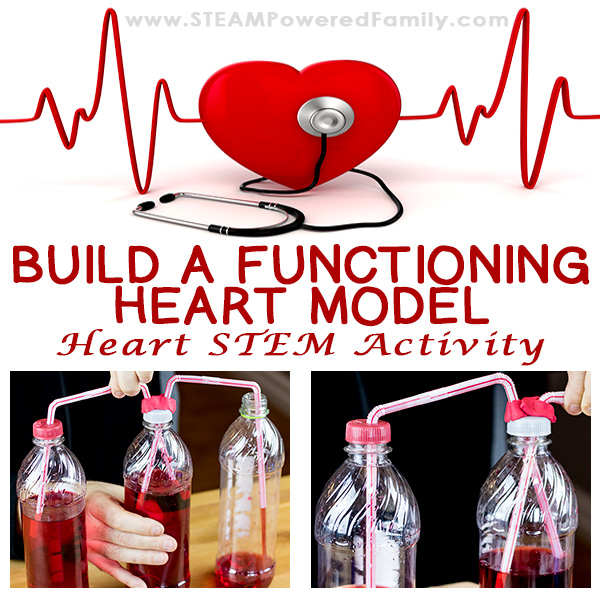
Windmill (STEM Project)
I love when I can combine a great science project with a fantastic book. If you decide to try a windmill engineering challenge (a brilliant STEM Project for 5th grade) there is a fantastic book called The Book Who Harnessed the Wind. This unit study is fantastic because it brings together literacy/reading, history (it’s a true story) plus engineering and physics lessons. The book is a great read with multiple levels of difficulty available.
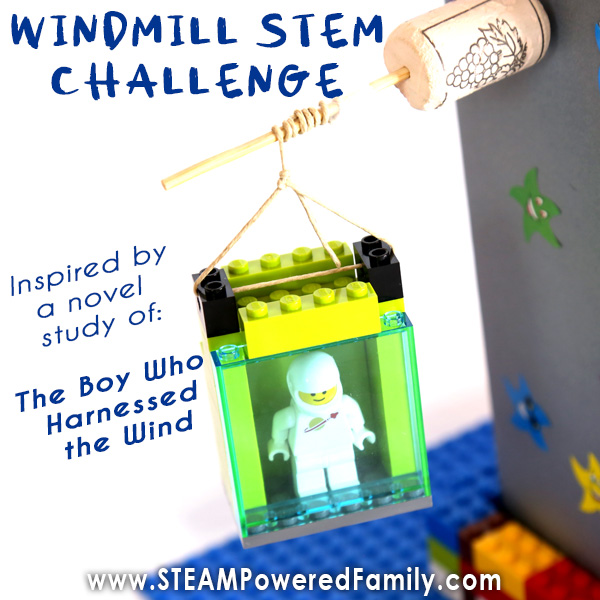
Elephant Toothpaste
Elephant Toothpaste is a great science experiment for grade 5 that explores chemistry, biology, and states of matter. Plus it is a lot of fun for students!
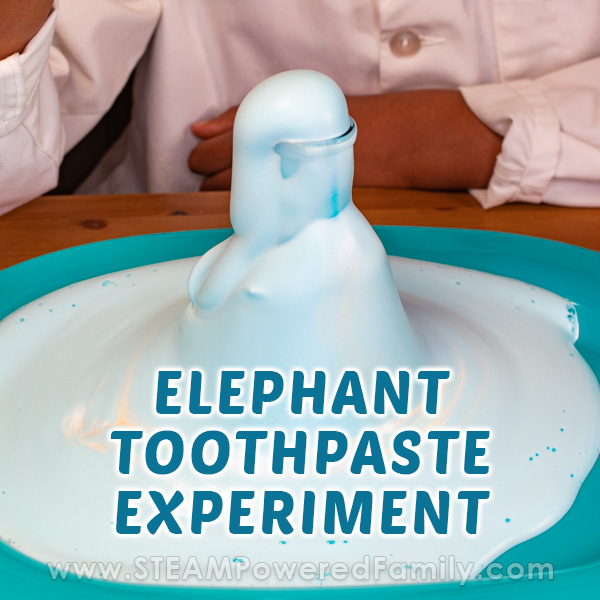
Space Projects
Space is a fantastic topic to tackle with 5th graders! They love learning about the stars, planets and and our place in the universe. We have been obsessed with our space studies for many years and have compiled a great resource with tons of space related science experiments , all perfect for 5th grade! My personal favourite is the pipe cleaner constellations and the space inspired bath bombs!
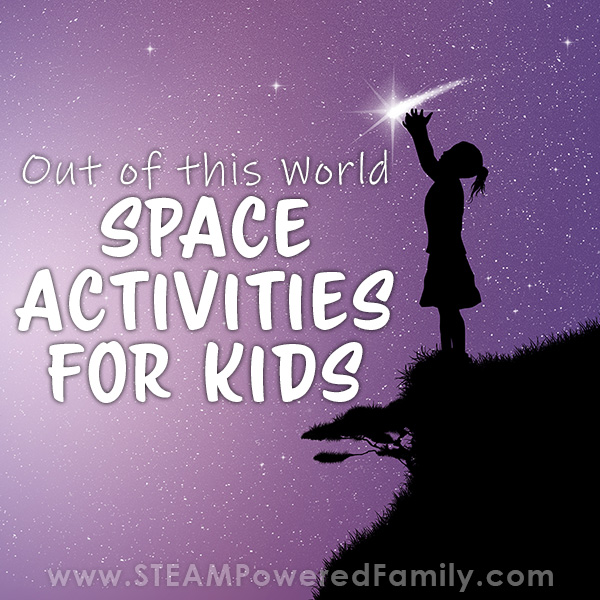
Coding Challenges
Coding is the second language of today and the future and something all kids should explore and learn. It can be intimidating to teach coding if it is not something you are familiar with, but thankfully there are a lot of programs and options out there to help kids learn coding. We have a number of screen free options, plus there are programs, toys and more all designed to make learning coding fun and easy!
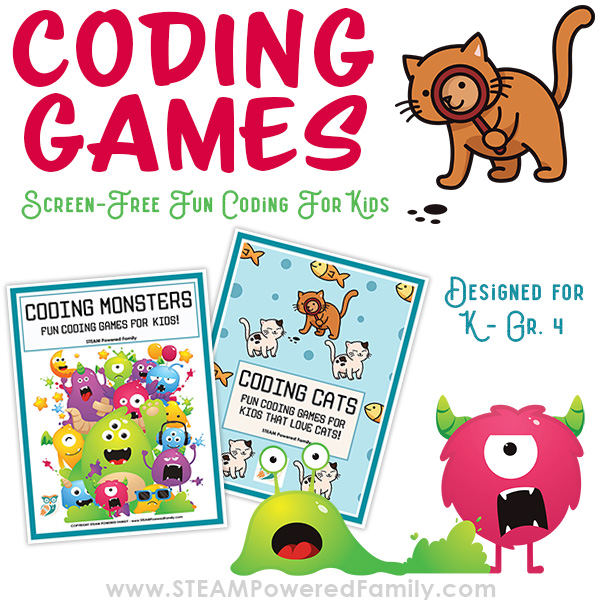
Circuit Building
Light it up! Kids in grade 5 are the perfect age to build circuits and learn how electricity works. From salt circuits, to circuits built with food, to circuit bugs, there are so many cool options for you to explore.
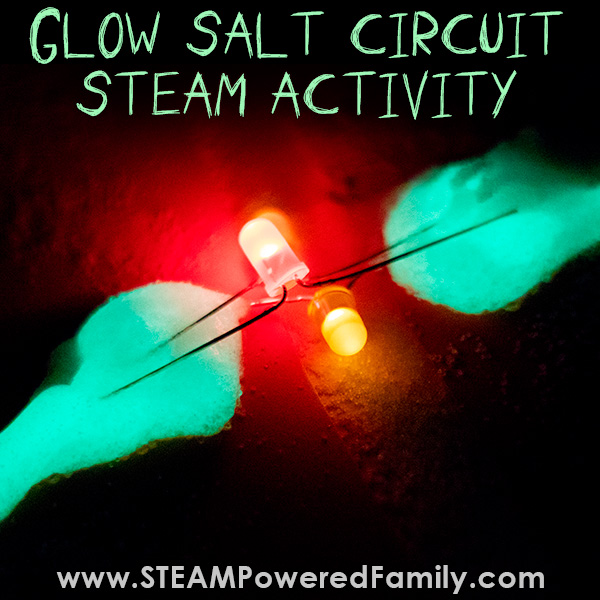

Wingardium Leviosar
Magnets are fascinating for kids and a great tool for doing some simple science experiments. One of our favourite science experiments we did in grade 5 tied into the Harry Potter books, Wingardium Leviosar Magnetism Experiment . Making this another fun cross subject activity!
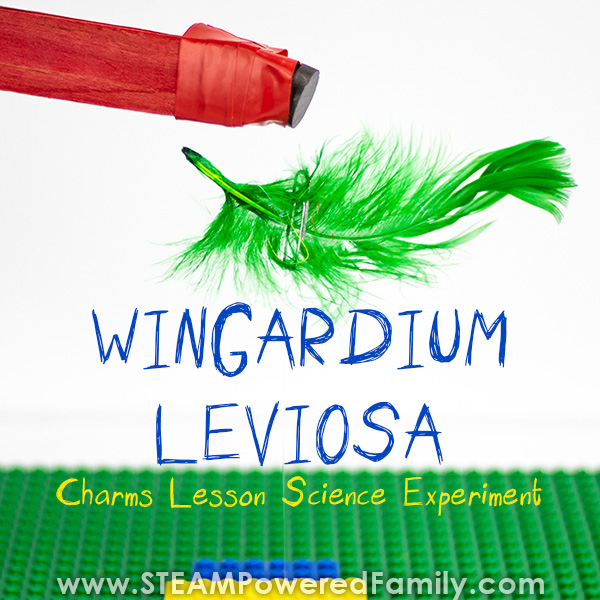
Water Science
Water is an incredible tool for doing science experiments with liquids in 5th grade. You can use it to study states of matter, physics, chemistry, and more. It is readily accessible, safe for kids and the experiments are a ton of fun! We have done lots of experimenting with water science over the years. Check out our comprehensive resource on Water Science Projects for the perfect experiment for your studies.
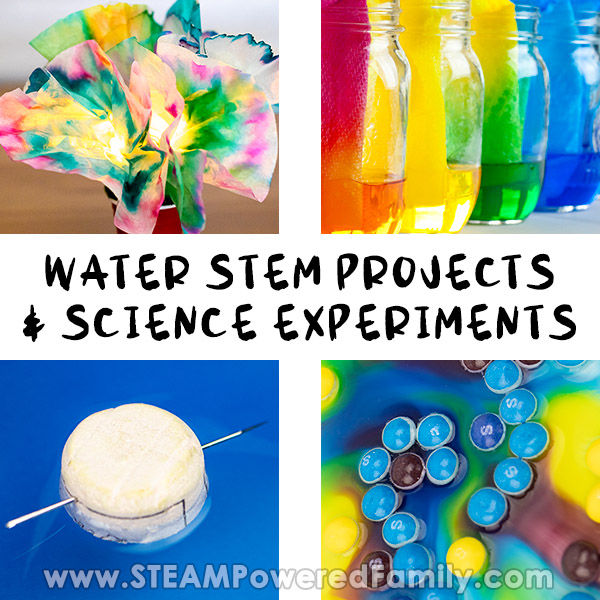
Make It Move
Make it Move is a fantastic classroom challenge, where kids need to innovate and come up with ways to make their car race across a track or table without pushing it! Give them a variety of supplies and a matchbox car, then watch those imaginations go wild.
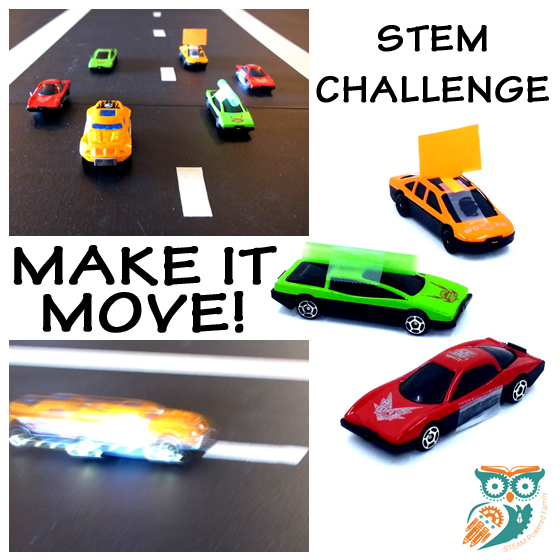
Balloon Races
A wonderful activity for introducing physics concepts to kids in 5th year is balloon races . It gets them up and moving and having a blast exploring these fundamental concepts around Newton’s Laws of Motion. Budget friendly, fun and perfect for home or the classroom, this is one activity you must do!
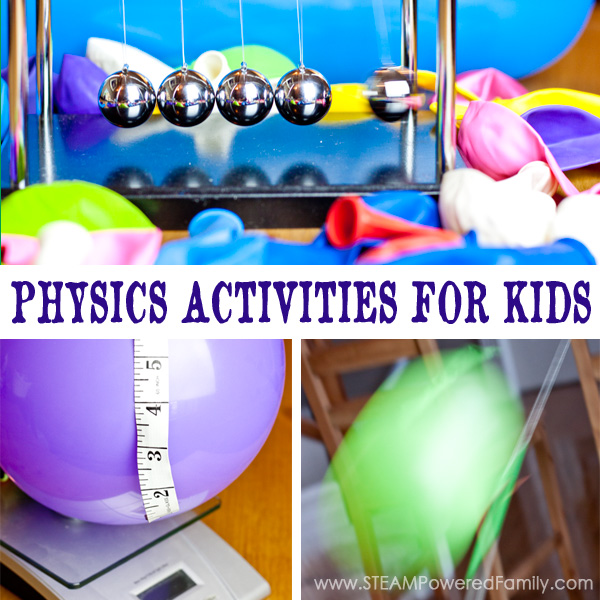
Layers of the Earth Soap
Learning about the layers of the Earth with this soap making project is a great way to explore our gorgeous planet. Plus, every time the kids wash their hands they will remember the lessons on the planet layers, helping to reinforce those concepts.
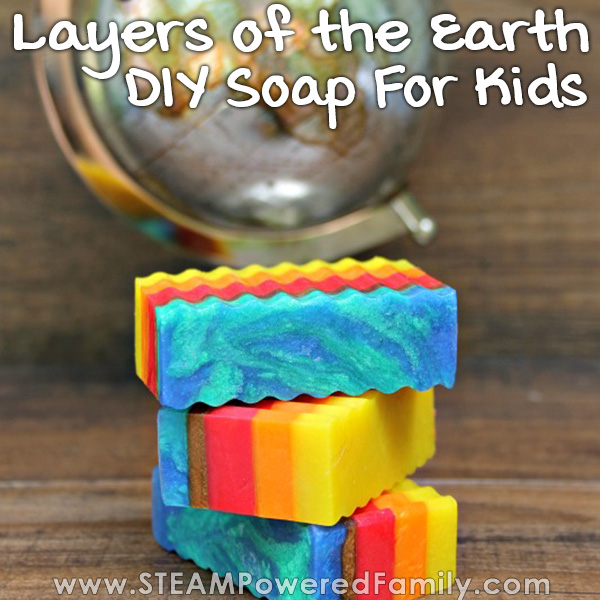
Climate Change and the Greenhouse Effect
Students will gain a greater understanding of the water cycle, climate change and the way greenhouse gases capture and hold heat in this experiment in a jar . Fantastic as an experiment, science fair project, or a classroom demonstration.
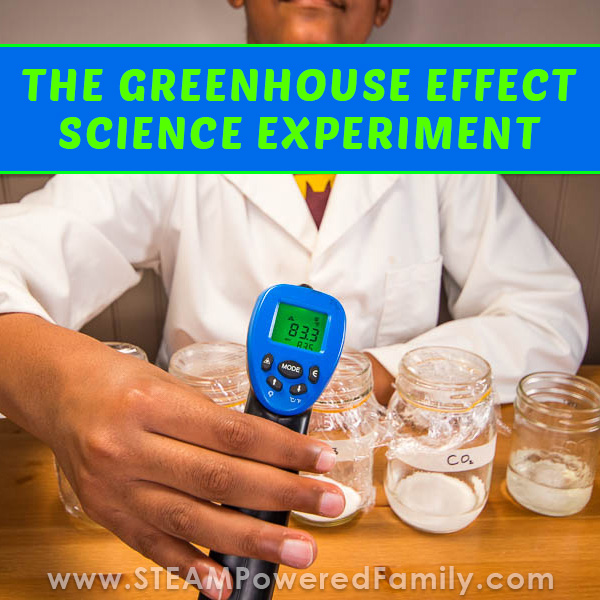
Lifecycle Activities
Learning about lifecycles is a very popular topic for our 5th grade students. We have a fun Lifecycle Decoding Activity that is perfect for some screen free learning. Plus it combines coding skills with learning about lifecycles.
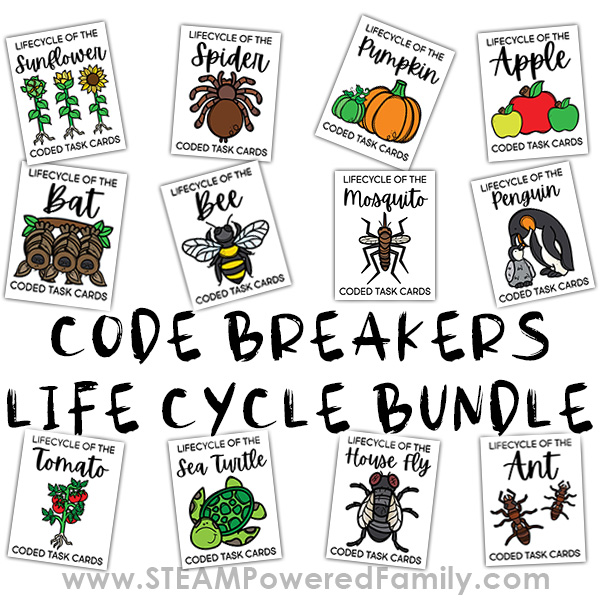
Rain Clouds
Looking for a gorgeous, simple, and fairly quick experiment? Try this Rainbow Rain Clouds experiment and learn how clouds work when it rains. It’s easy, fast and kids can do this experiment independently.
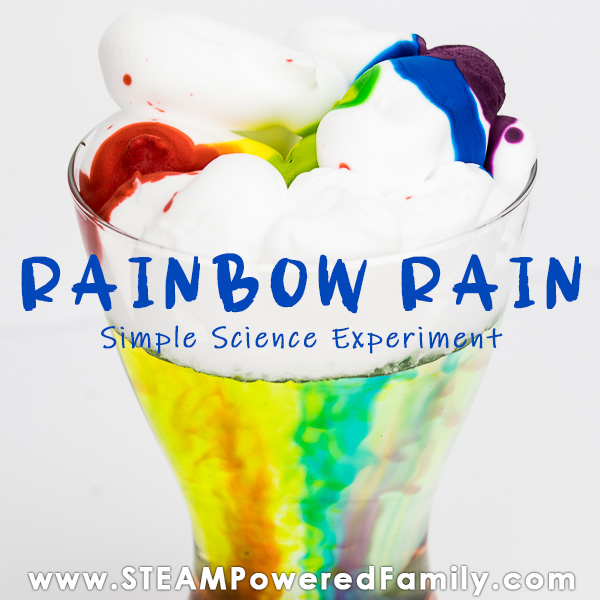
One of the key concepts kids should be learning not just in grade 5 but throughout their schooling is the Scientific Method . Using the method should become natural and easy with practice and encourages critical thinking and analysis which is important for all students to master.
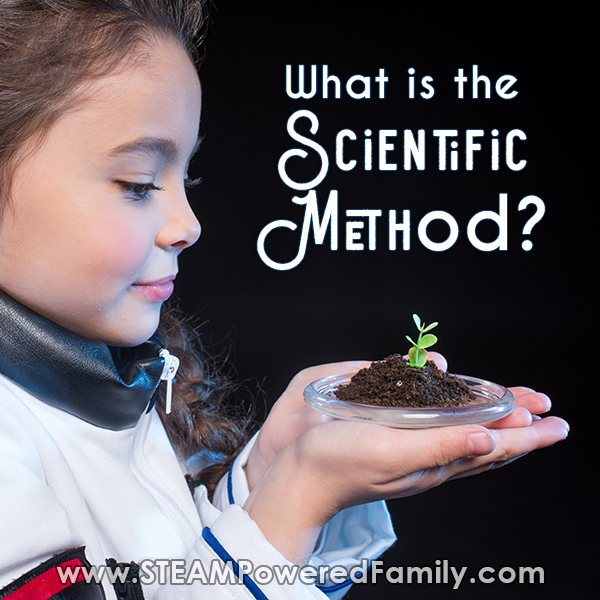
The Science Fair
Grade 5 is a very popular grade for science fair projects! We LOVE doing science fair projects and have so many ideas. Check out our comprehensive resource to find the perfect science fair project idea. We also provide tips on how to prepare, what to expect, and topic ideas.
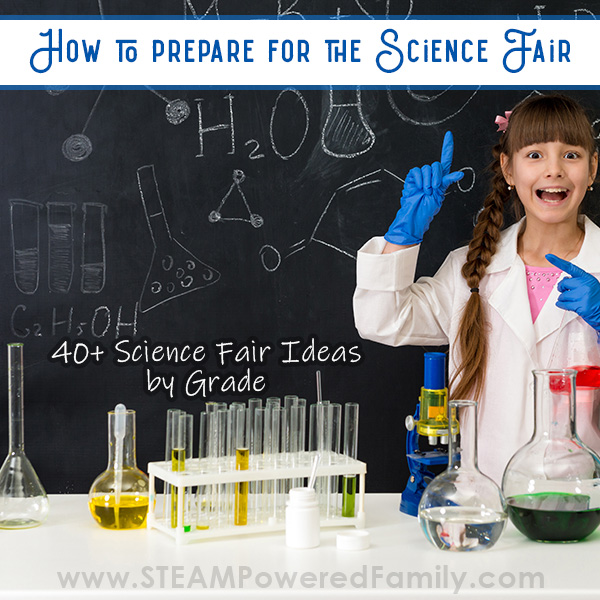
Grade 5 is a wonderful year for science experiments and hands on learning. Enjoy these top picks for Science Experiments for 5th Graders.
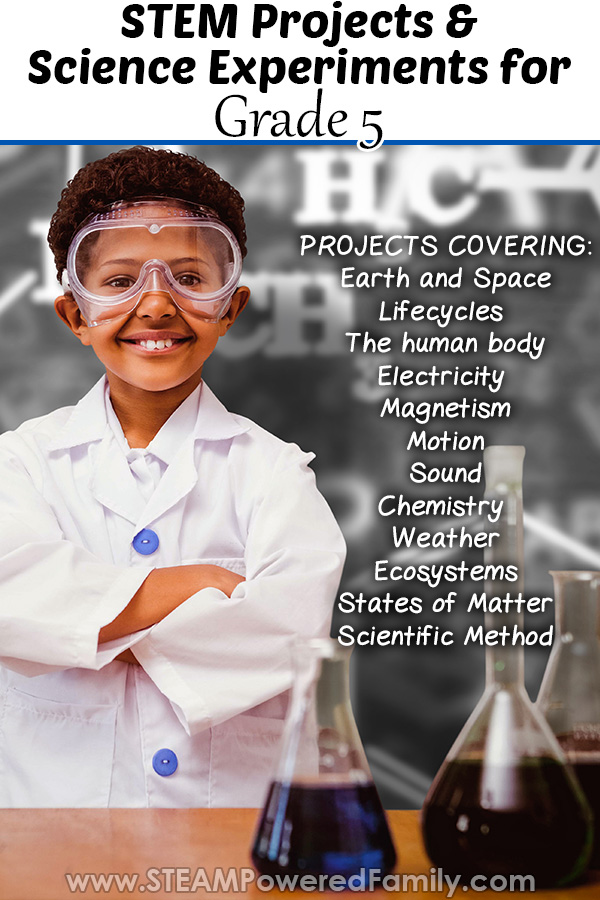
More Science Ideas
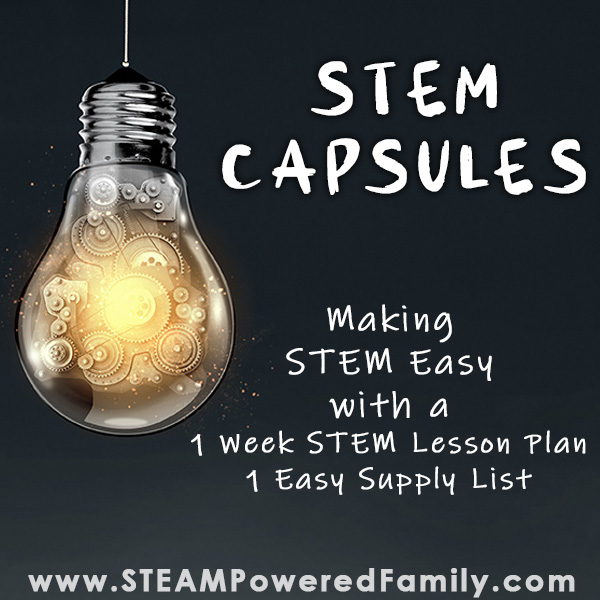
5 Days of Smart STEM Ideas for Kids
Get started in STEM with easy, engaging activities.

Biglearners.com
- --> Math English